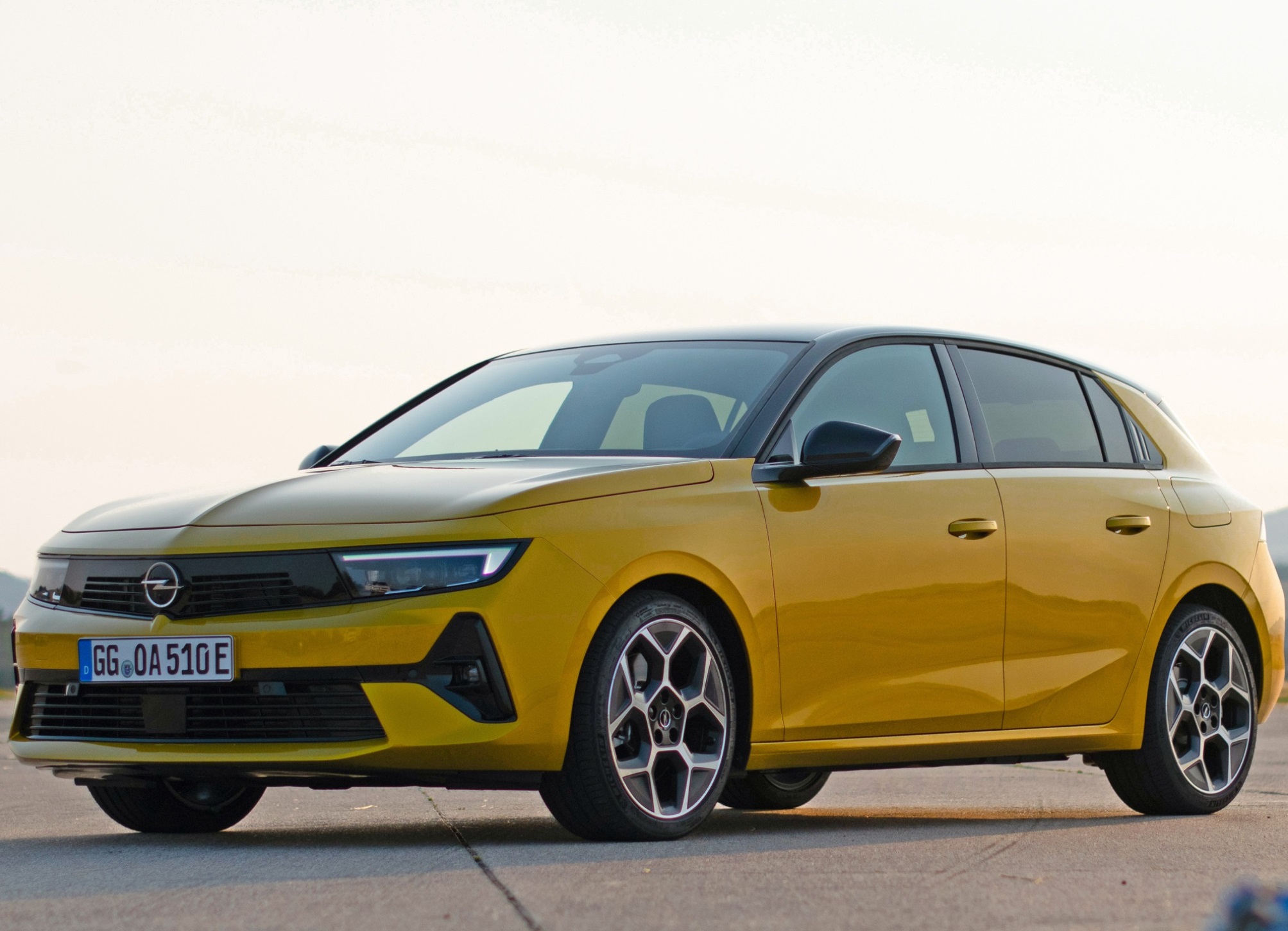1992
/
2022
NEW CLASSIC / NEW
Cars
| 2022
There is no official definition of "classic car", but as a rule, cars of 30 years or older are now considered classic. That means cars from 1992 are classic from this year (NEW CLASSIC). In this series I compare them to their most recent descendant (NEW), if any. The car market has changed quite a bit since 1992, as you will see if you scroll down and read on. (A car is added every week.)
Alfa Romeo 155
Audi V8 4.2Bentley Brooklands
BMW 3 Series Coupé
BMW 5 Series Touring
Buick LeSabre
Cadillac Seville
Chrysler Vision
Citroën ZX 3-door
Ferrari 456 GT
Ford Escort
Honda CRX (Del Sol)
Jaguar XJ220
Kia Sephia
Maserati Ghibli
Mazda 626
Mazda Xedos 6
Mazda RX-7
Mercedes-Benz E-Class cabriolet
Mercedes-Benz S-Class Coupé
Mercury Sable
Mitsubishi Colt
Mitsubishi Lancer Wagon
Nissan Micra
Opel Astra sedan
Opel Frontera
Opel Monterey
Peugeot 106 5-door
Porsche 968 Club Sport
Renault Safrane
Rolls-Royce Corniche IV
Rover 200 Coupé
Subaru Vivio
Subaru Impreza
Suzuki Swift Cabrio
Toyota Carina E
Toyota Corolla
Volkswagen Vento
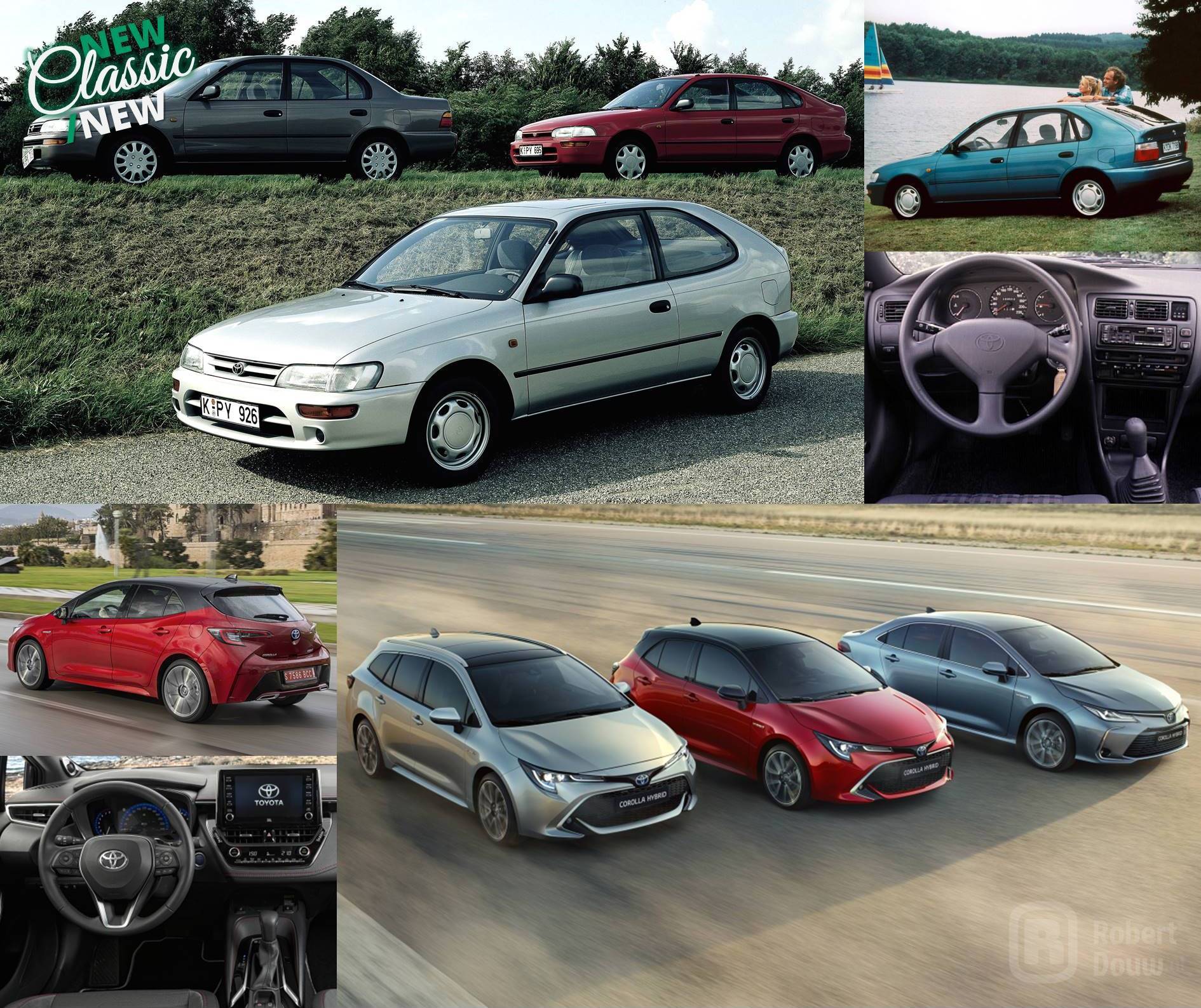
Toyota Corolla
/
Toyota Corolla
In 1992 Toyota introduced a new generation Corolla. It was available as a 3- and 5-door hatchback, 5-door liftback, sedan and station wagon. Today, the Corolla is available as a 5-door hatchback, sedan and station wagon. Apart from the disappearance of two body styles, little seems to have changed. That's of course not entirely true: the hatchback was called Auris in Europe for a while and especially in terms of technology and infotainment there is a significant generation gap. Still, the Toyota Corolla is one of the cars in this range that has changed the least in 30 years. Never change a winning team.
TO TOP
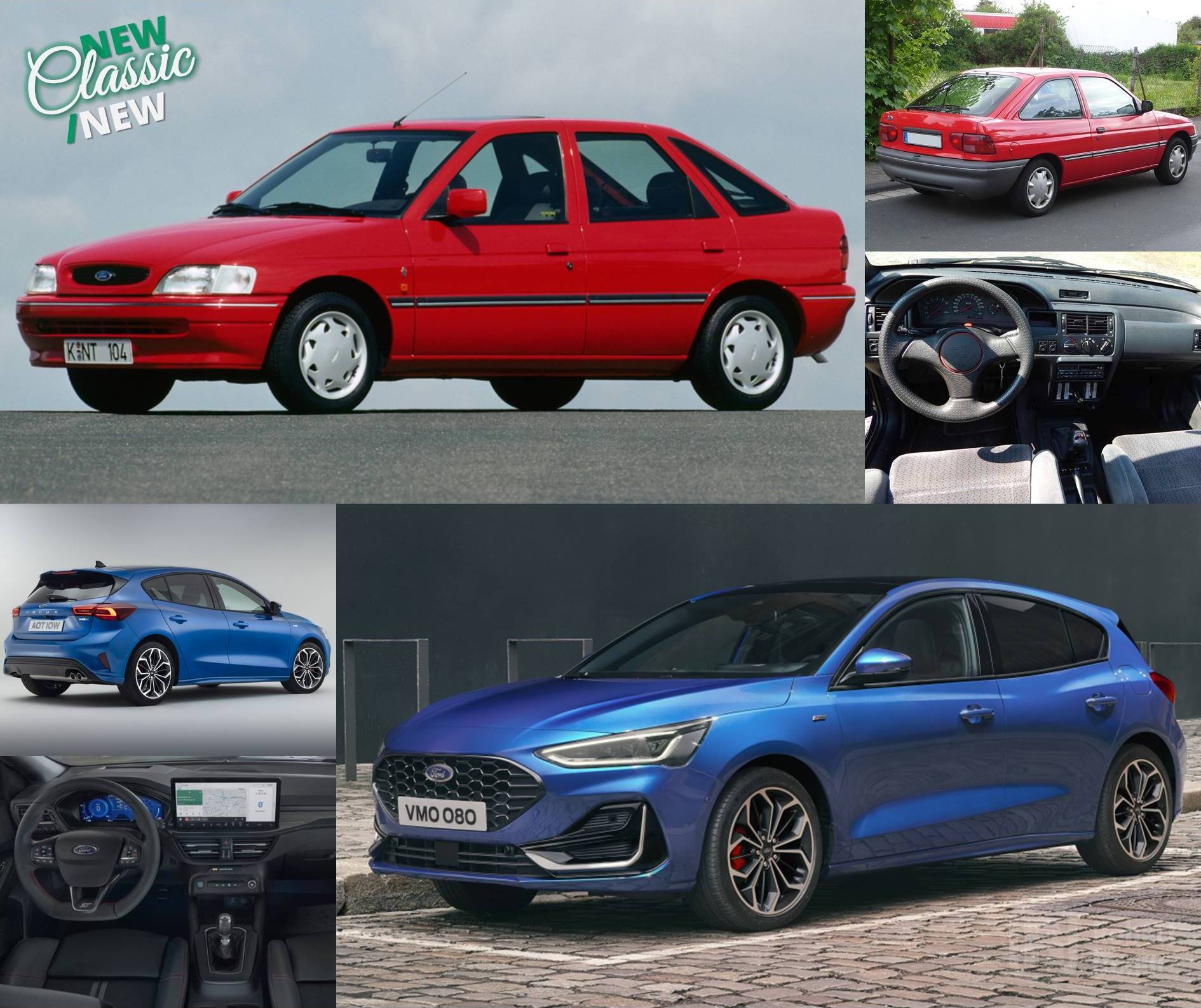
Ford Escort
/
Ford Focus
The 1992 Ford Escort was not a new model, but a facelift of the model that had only been on the market for two years at the time. Another facelift followed in 1995, which indicated that the Escort had seen better days. From 1998, Ford took a completely different approach with the Focus. With the model that can now be found in the showroom, the sharp edges of the first Focus have disappeared, but it is still a "real" hatchback, where the Escort was more of a liftback.
TO TOP
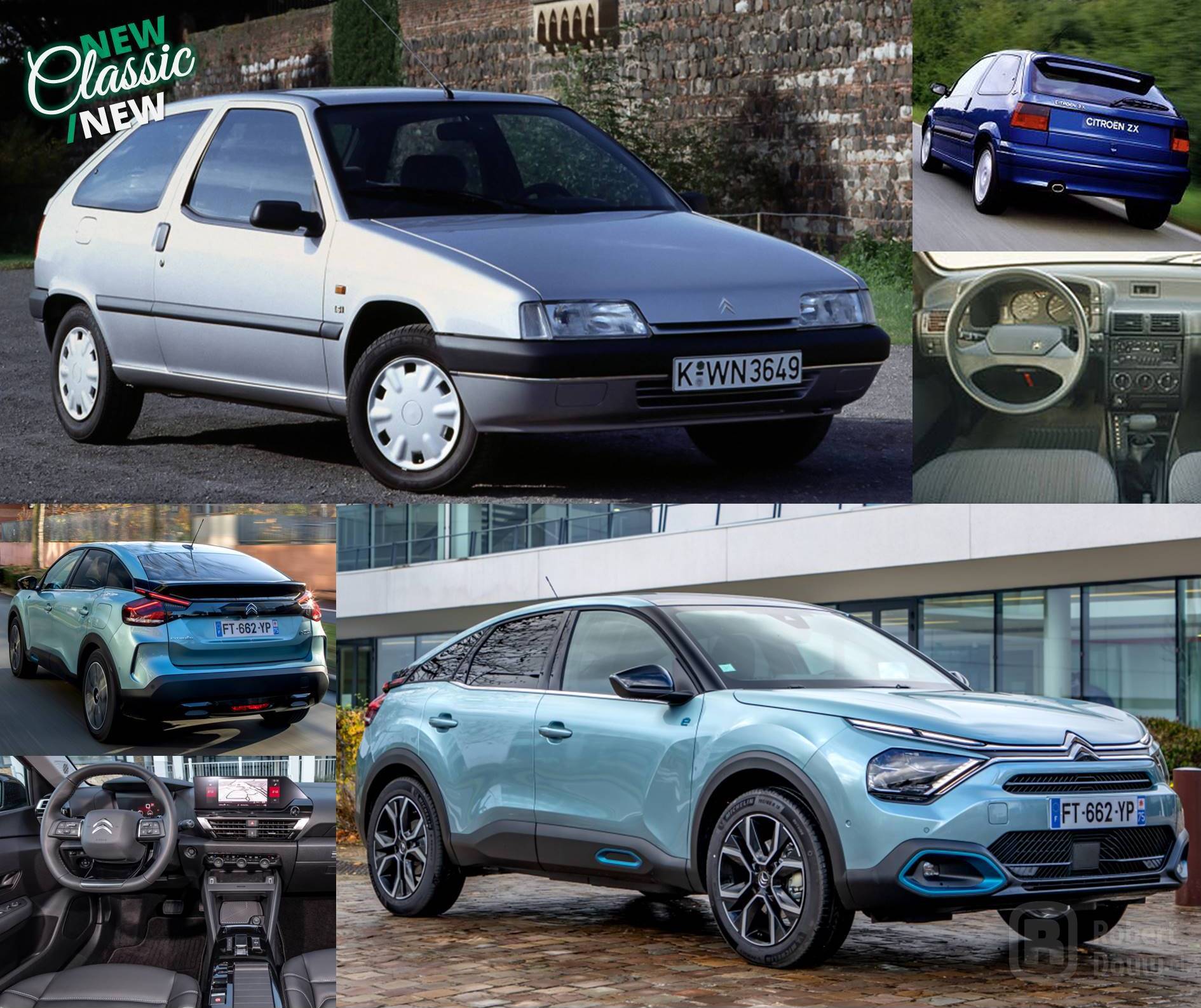
Citroën ZX 3-door
/
Citroën C4
As the three-door hatchback was almost a fixture in the C-segment in the 1990s, nowadays you look in vain for it. The Citroën ZX was introduced in 1991 as a 5-door hatchback, but from 1992 there was also a 3-door, supplemented in 1994 by the Break (station wagon). I like the tidy and understated design of the ZX and the recognizable diesel rumble of the 1.9. The difference with today could hardly be greater: the current C4 is an expressively designed liftback with SUV features, among other engines available with electronic drive.
TO TOP
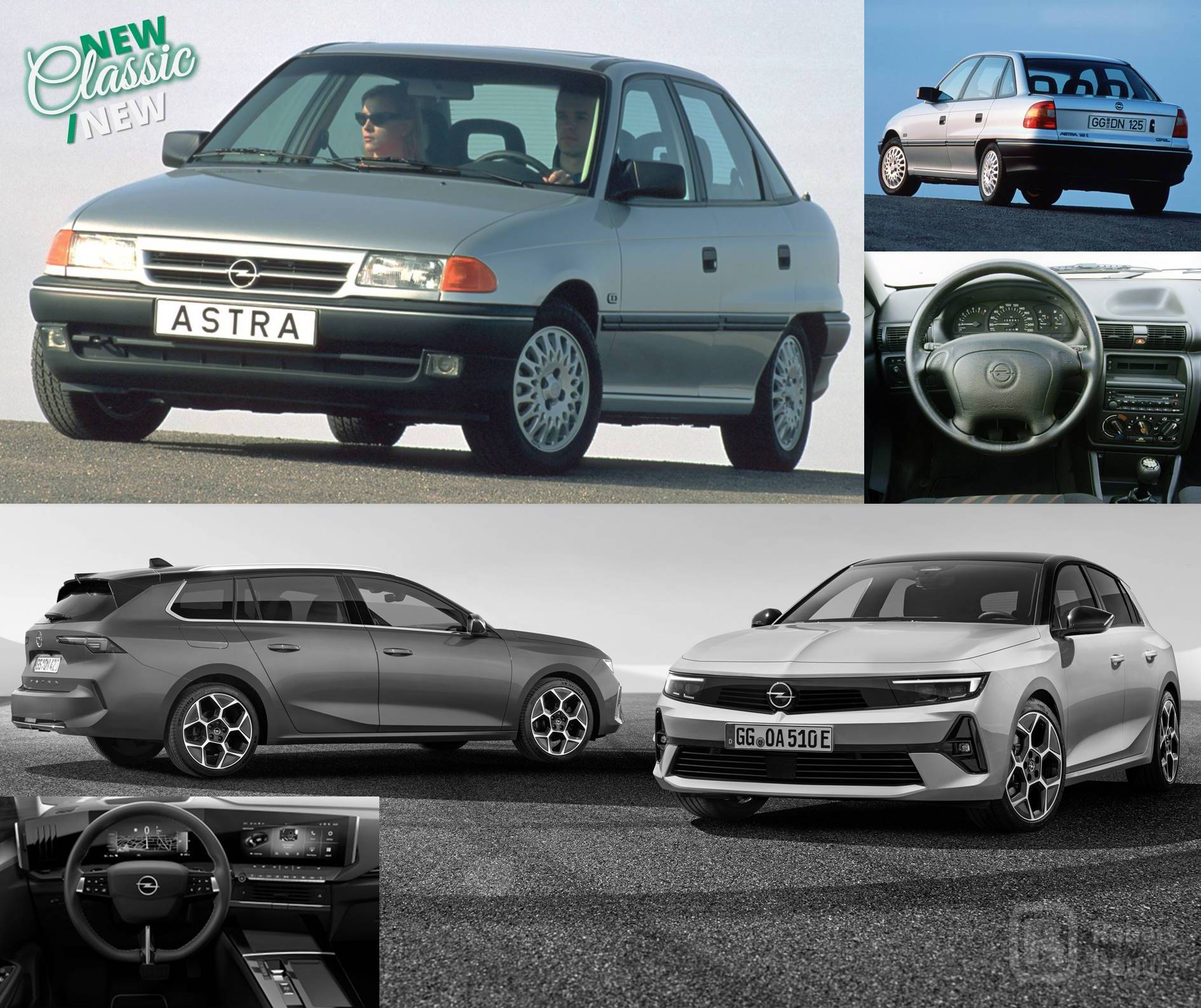
Opel Astra sedan
/
Opel Astra
A sedan in the C-segment was just as commonplace as the 3-door hatchback, but nowadays it is almost reserved for the German "premium brands" (which in 1992 did not yet build C-segment cars). The Astra sedan has always done less well than the hatchback and in 2004 Opel gave up. With the sedan that is, and only in Europe. The Astra is still there, albeit only as a five-door hatchback and Sports Tourer (station wagon). The model no longer has American genes, but French ones. The current Astra is therefore more European than ever.
TO TOP
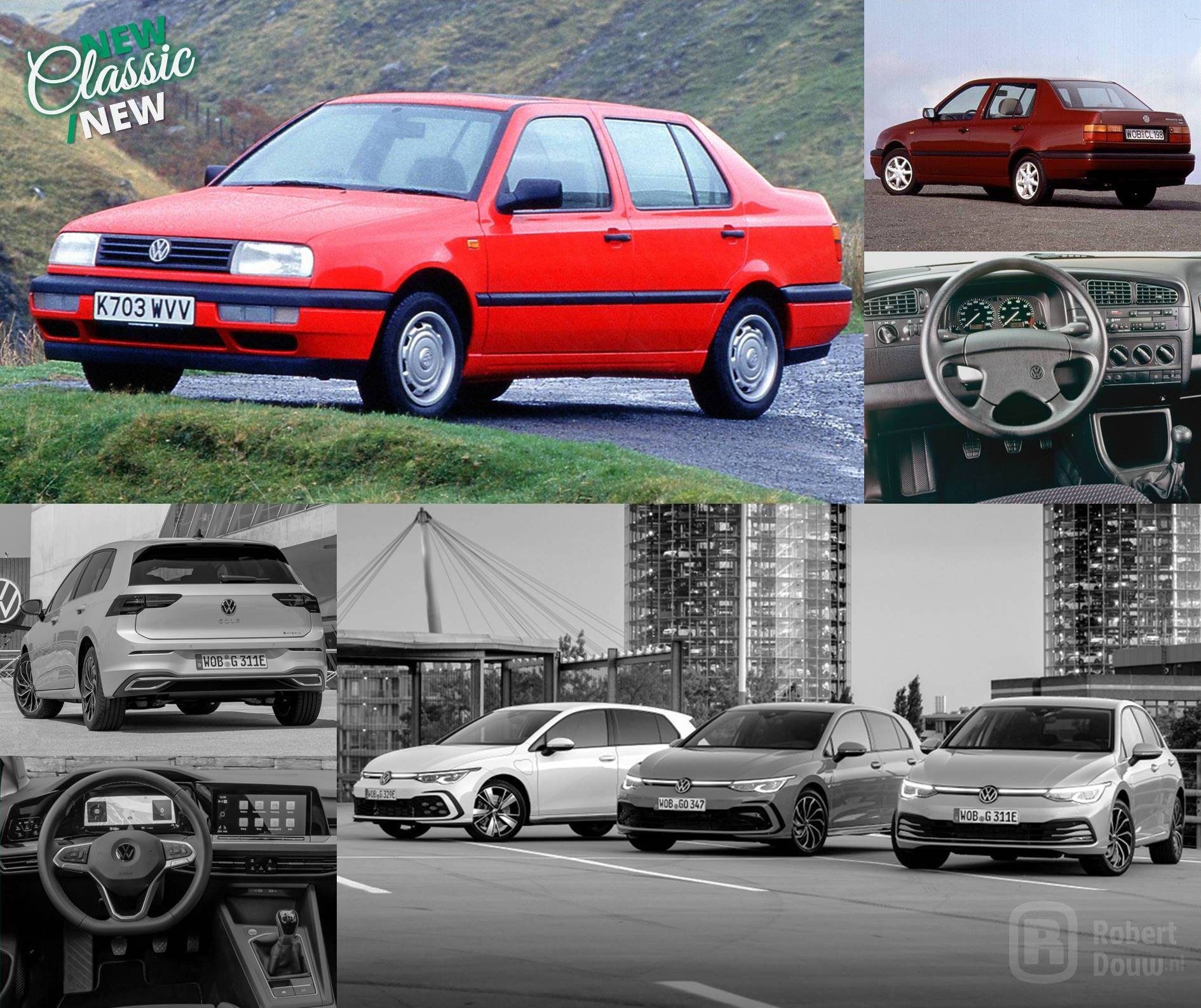
Volkswagen Vento
/
Volkswagen Golf
Volkswagen has always sold the sedan version of the Golf under a different name: Jetta, Vento, Bora, Jetta. With the Vento (called Jetta outside of Europe), VW wanted to detach the sedan a bit more from the Golf. However, a distinctly different front wasn't enough to obscure the fact that it was a Golf-with-butt. The sedans were never really successful in Europe, so the 2018 Jetta was never for sale here. The current Volkswagen that comes closest to it is the Golf, available as a 5-door hatchback and as Variant (station wagon).
TO TOP
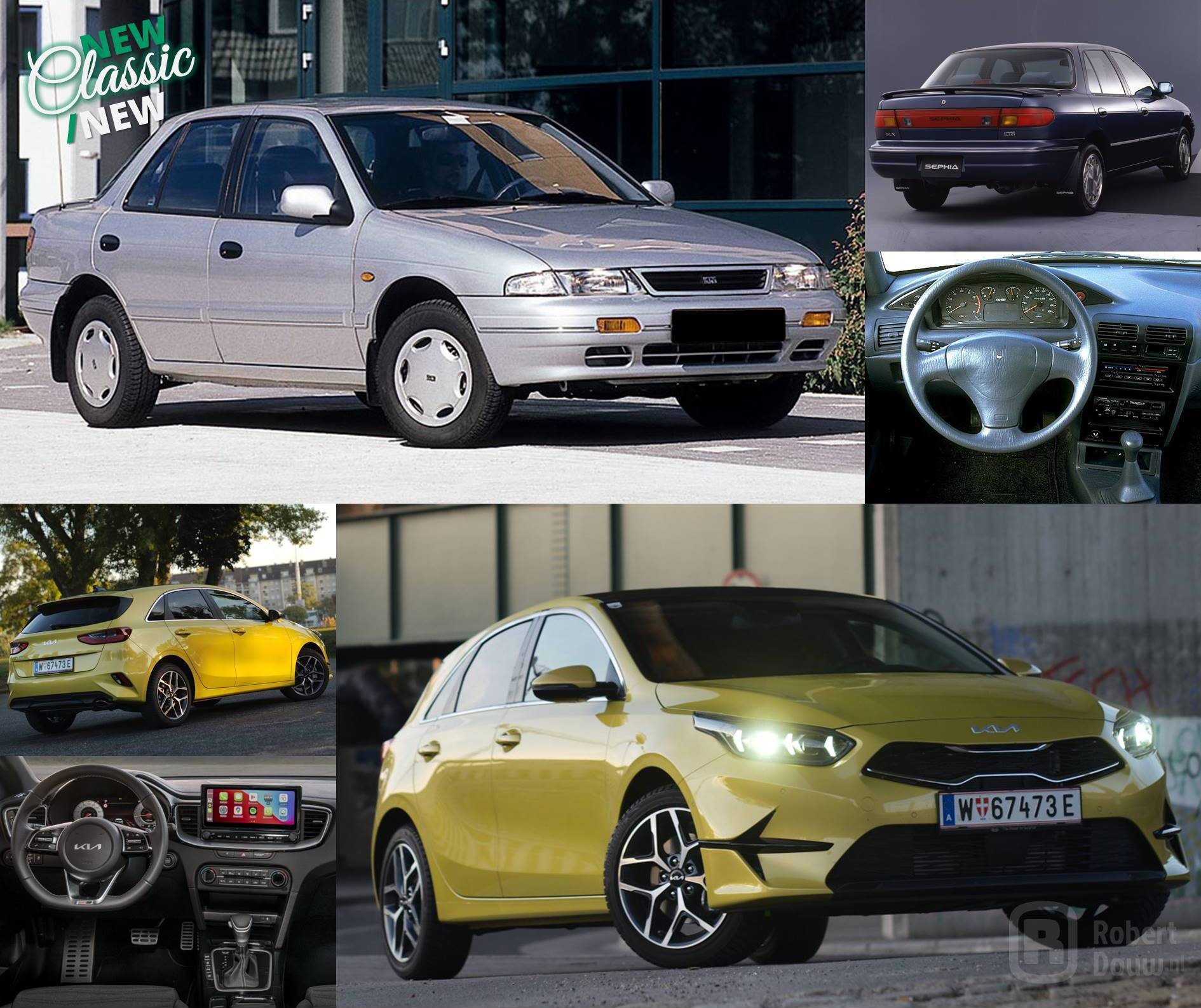
Kia Sephia
/
Kia Ceed
In the first half of the 1990s, Kia came to Europe, in some countries earlier than others. The Sephia was Kia's first self-developed model and was initially only available as a sedan. A hatchback was added in 1996, although it was actually more of a liftback. The first true hatchback was the Cerato which came to Europe in 2004 and was succeeded by the cee'd in 2007. The current Ceed (indeed written differently) was one of the few hatchbacks in the C-segment in 2021 of which the market share in Europe expanded instead of shrank. Kia is on a roll.
TO TOP
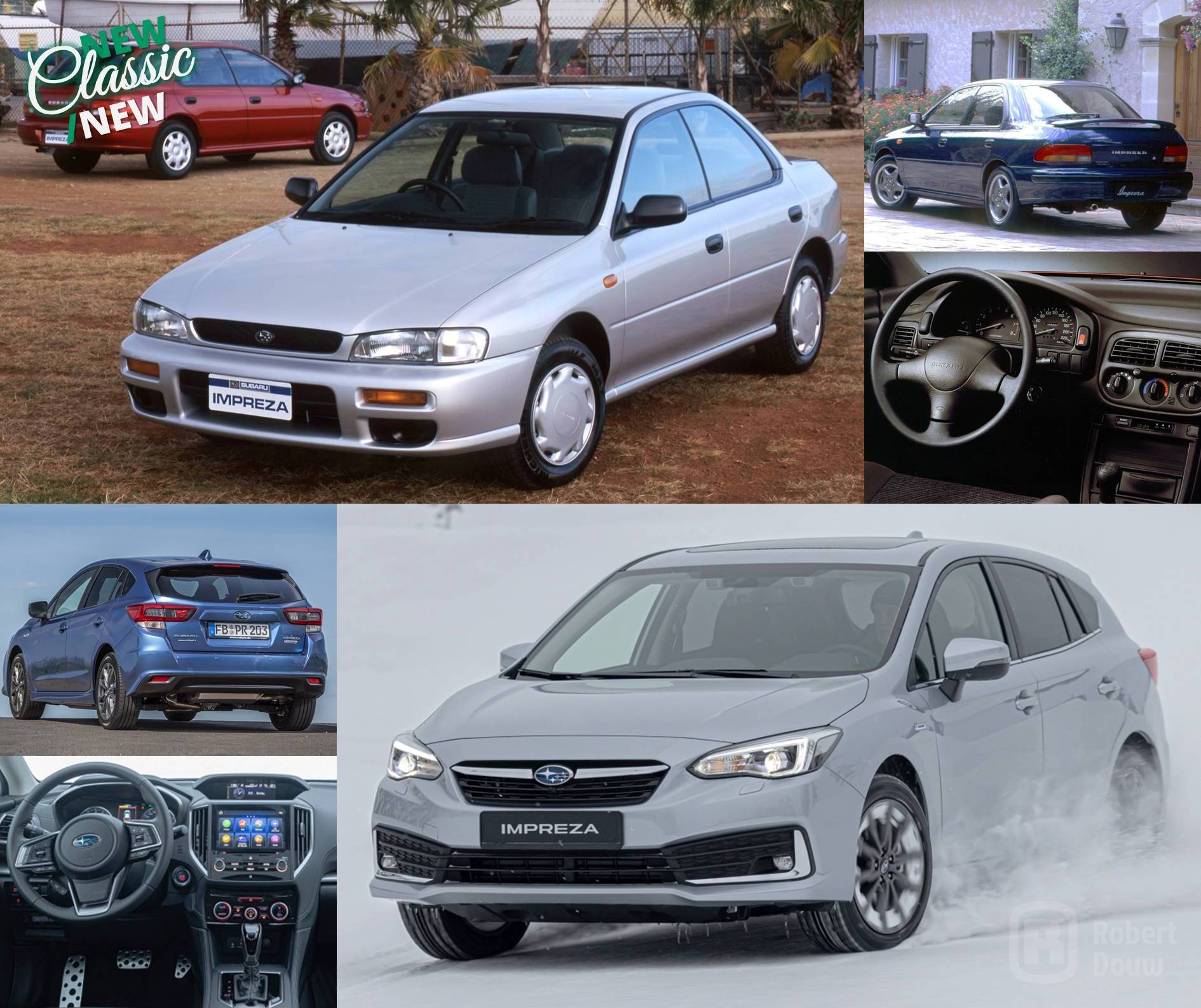
Subaru Impreza
/
Subaru Impreza
The Impreza was a new model for Subaru in 1992, which, as usual for Subaru, distinguished itself from the competition with boxer engines and four-wheel drive. There was a variant that was something between a hatchback and a station wagon, but you saw the sedan more often. That model achieved quite some rally titles and with the WRX there was also a street version. Today, the Impreza is always a hatchback in Europe, although in some European markets the model is no longer available at all.
TO TOP
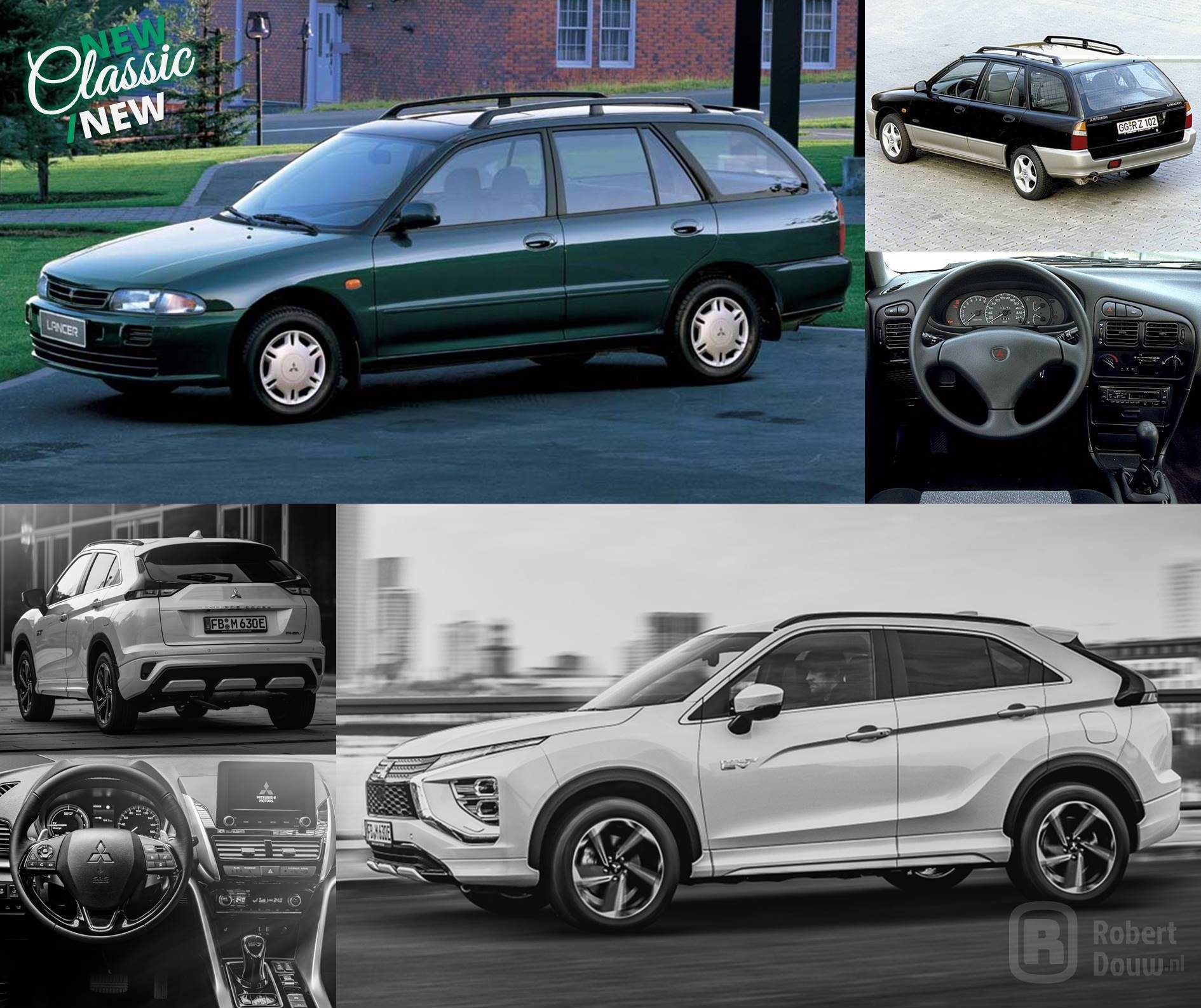
Mitsubishi Lancer Wagon
/
Mitsubishi Eclipse Cross
Mitsubishi was ahead of the fashion a number of times (MPV, SUV, PHEV), but was unable to capitalize on it. At the moment, the brand only offers two or three models in most European countries. Of these, the Eclipse Cross comes closest to the former Lancer Wagon. The 1992 model followed the sedan introduced in 1991, although the Wagon was available earlier in some European markets. The Lancer had a lot of rally success as Evolution, but that didn't translate into European sales either. Since 2017, the Lancer is no longer sold in Europe.
TO TOP
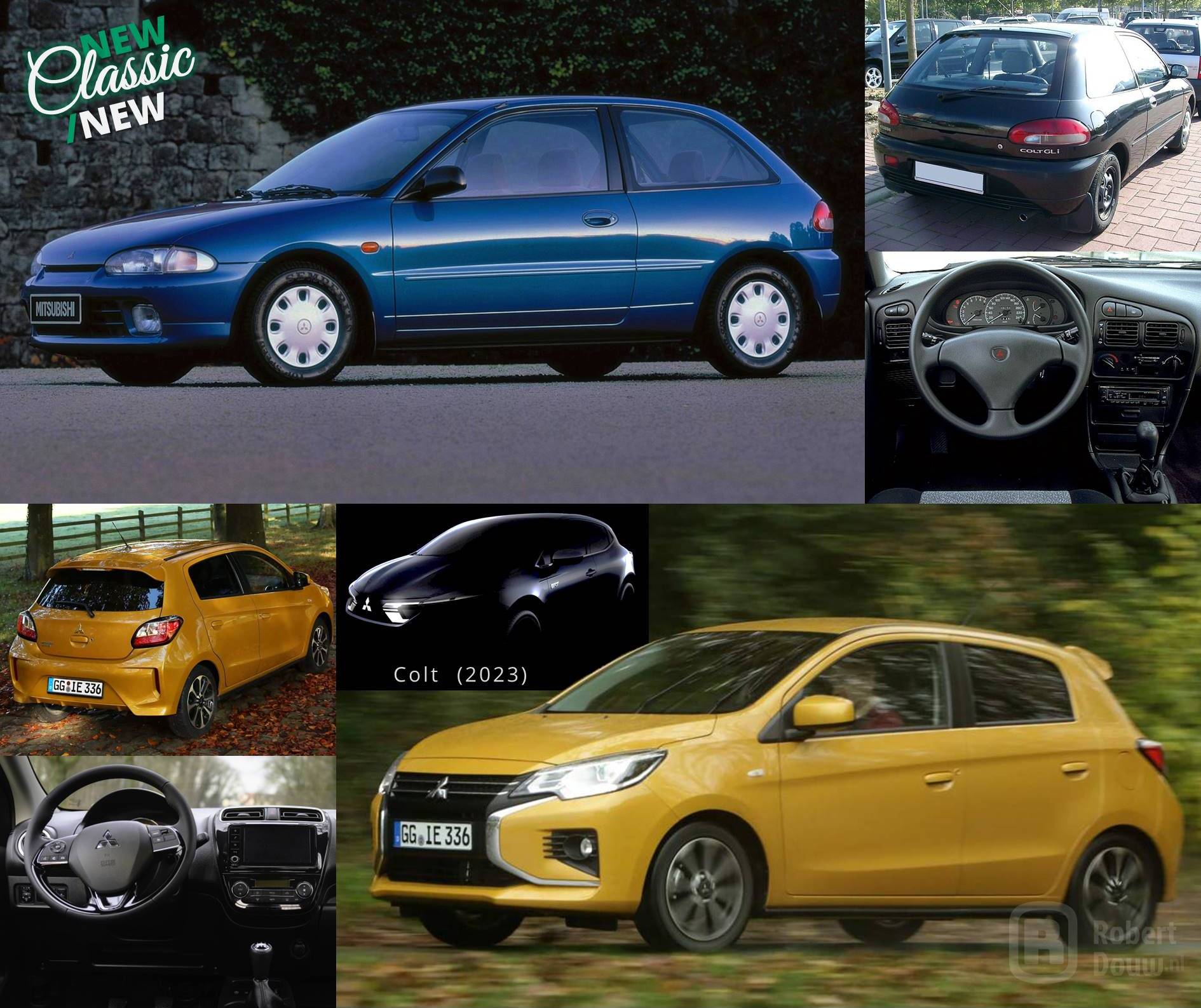
Mitsubishi Colt
/
Mitsubishi Space Star
The 1992 Colt was basically the hatchback version of the Lancer and so the model fell into the C-segment. It was only available as a three-door and was about 10 cm shorter than a Golf or Astra. While those models grew, the following Colts became a bit shorter, making it a B-segment car. The curtain fell for the Colt in 2012 and the slightly smaller Space Star has been doing the honours since. Mitsubishi has announced that a new Colt will be launched in 2023, alongside the Space Star. Judging by the teaser photo (see inset), it will be a slightly modified Renault Clio.
TO TOP
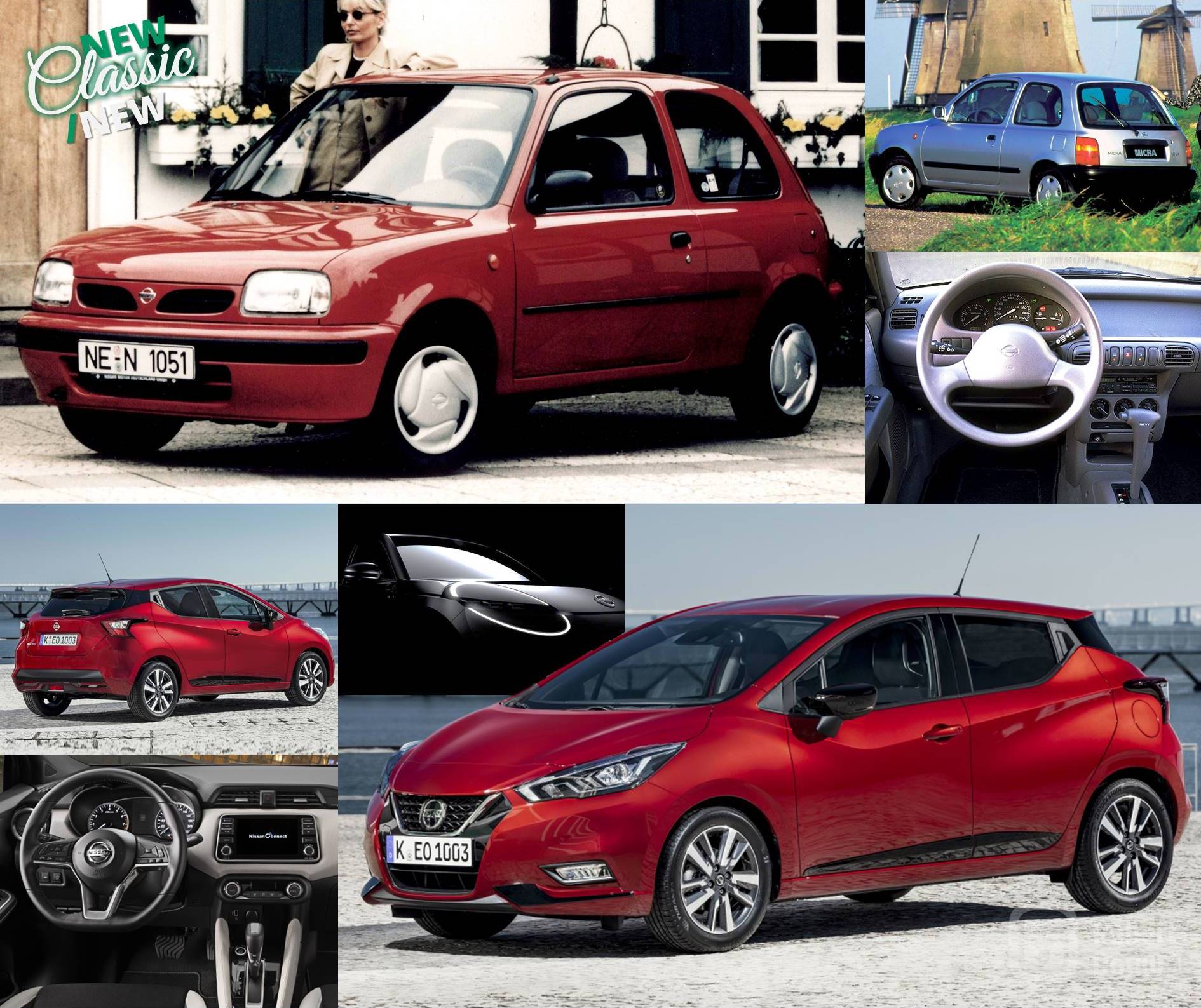
Nissan Micra
/
Nissan Micra
Around 1990 many compact cars were due for replacement, and so many new A- and B-segment cars came onto the market in the last decade of the last century. Most of them had a much nicer design than their predecessors. That includes the 1992 Micra, which became the first European Car of the Year of a Japanese brand. Over the years, the Micra became a bit more spherical in shape, until 2016, when Nissan unveiled the current model. With the next Micra, an electric car based on the upcoming Renault 5, the round shapes seem to be returning (see inset).
TO TOP
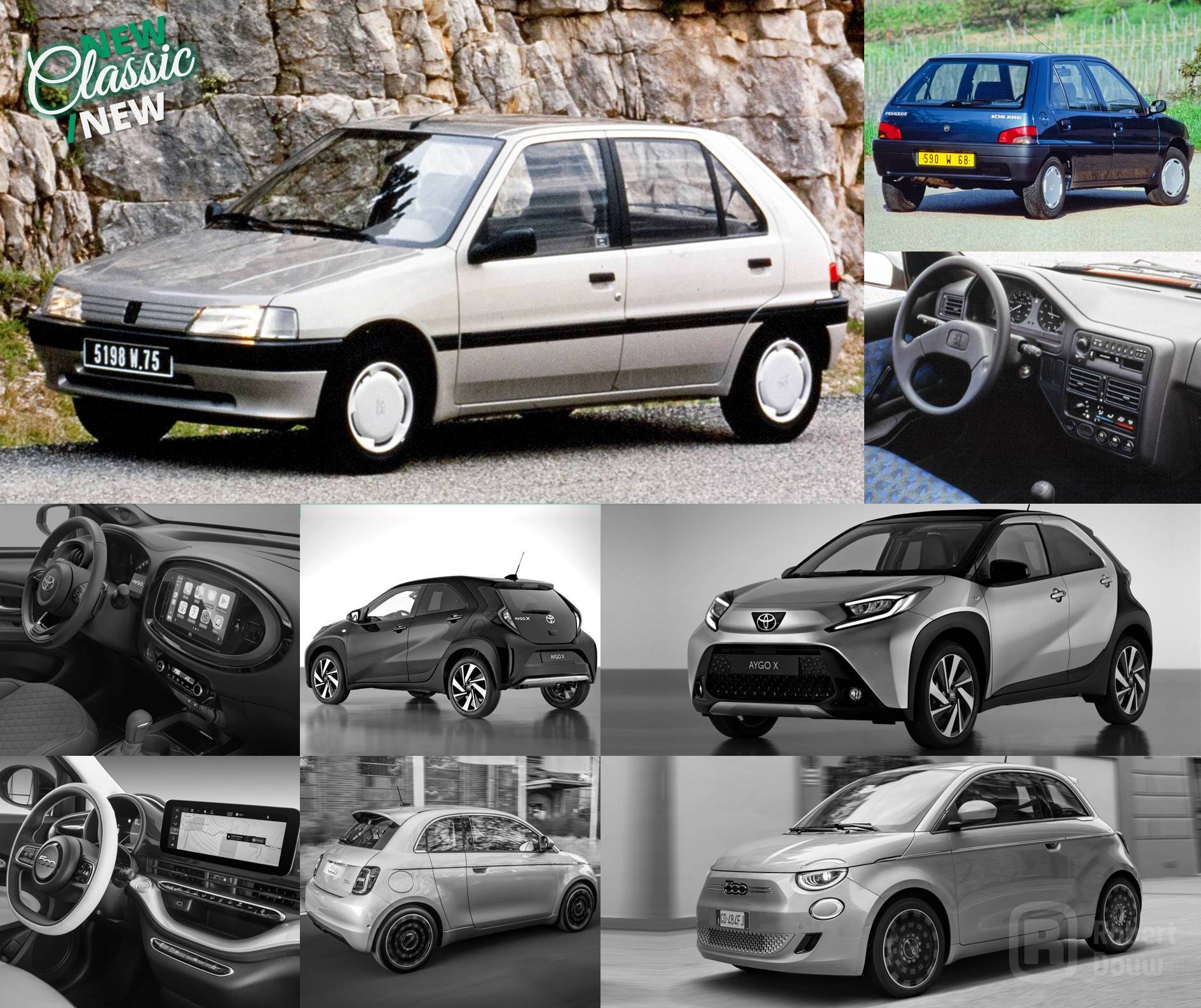
Peugeot 106
/
Toyota Aygo X / Fiat 500 3+1
Peugeot had introduced the three-door 106 in 1991, followed by the five-door in 1992. The 106 was succeeded by the 107 and 108. Nowadays Peugeot no longer has a model in the A-segment. What comes closest to a successor? The 108 was technically almost identical to the Toyota Aygo, which has a successor in the form of the Aygo X, so that's one option. Furthermore, Peugeot has been part of Stellantis since 2021, just like Fiat, among others. The 500e could very well be the basis for an e-108. The 500e comes closest to a five-door as 3+1.
TO TOP
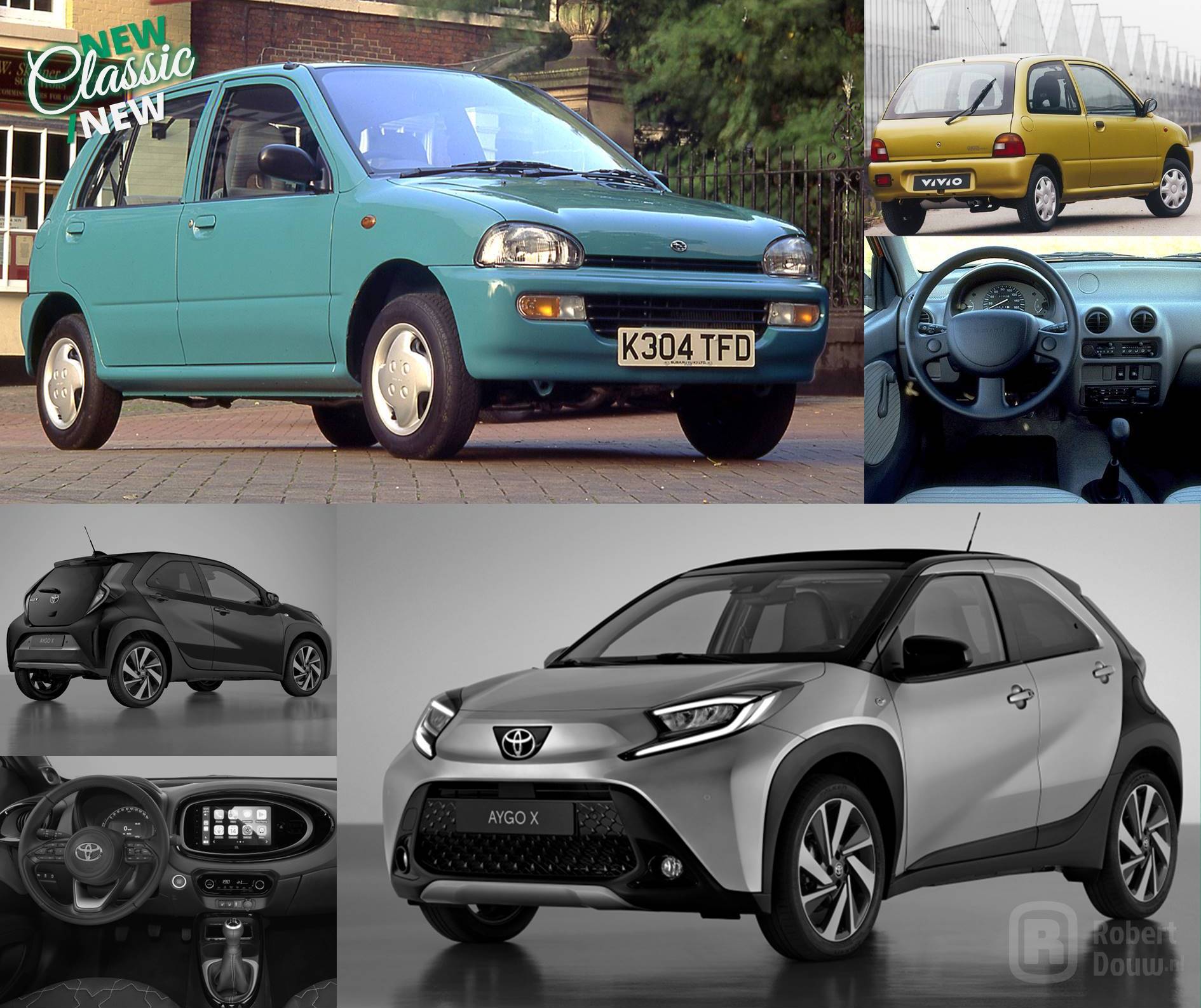
Subaru Vivio
/
Toyota Aygo X
Another nice little car from 1992: the Subaru Vivio, available at the time as a three- and five-door car. The Vivio was equipped with a small engine with a displacement of 658 cc, which is 660 if you round it off. The 6 in Roman numerals is VI, and if you replace the 0 with an O, you get VIVIO. Moreover, this is reminiscent of the word vivid and that naturally sounds nice and lively. Unfortunately, that zest for life only lasted until 1998. The successor of the Vivio didn't come to Europe. Given Toyota's share in Subaru, the Aygo X comes closest.
TO TOP
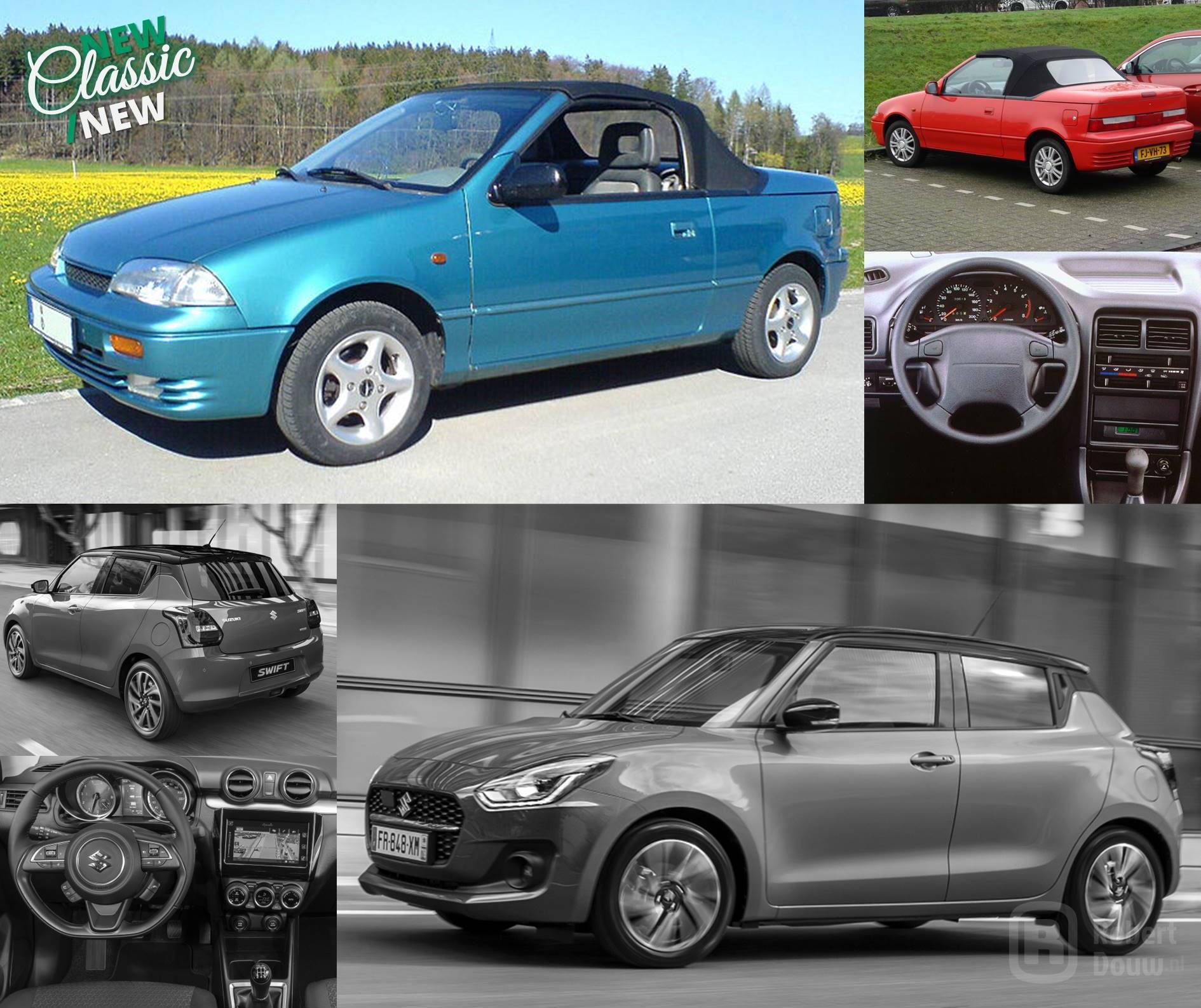
Suzuki Swift Cabrio
/
Suzuki Swift (Hybrid)
In the early 1990s, there were some 10 hatchback-based convertibles on the Dutch market to choose from. Now, in 2022, I only get to 3, if I include the linen roof of the Fiat 500C. The 1992 Suzuki Swift Convertible is one of the 10 from the first sentence. Although the Swift remained in production as a hatchback from 1989 to 2003, the Cabrio only lasted from 1992 to 1995. There is therefore no open version of the current Swift. You can get it with a black roof, though – that way it at least looks a bit like a convertible with a closed roof...
TO TOP
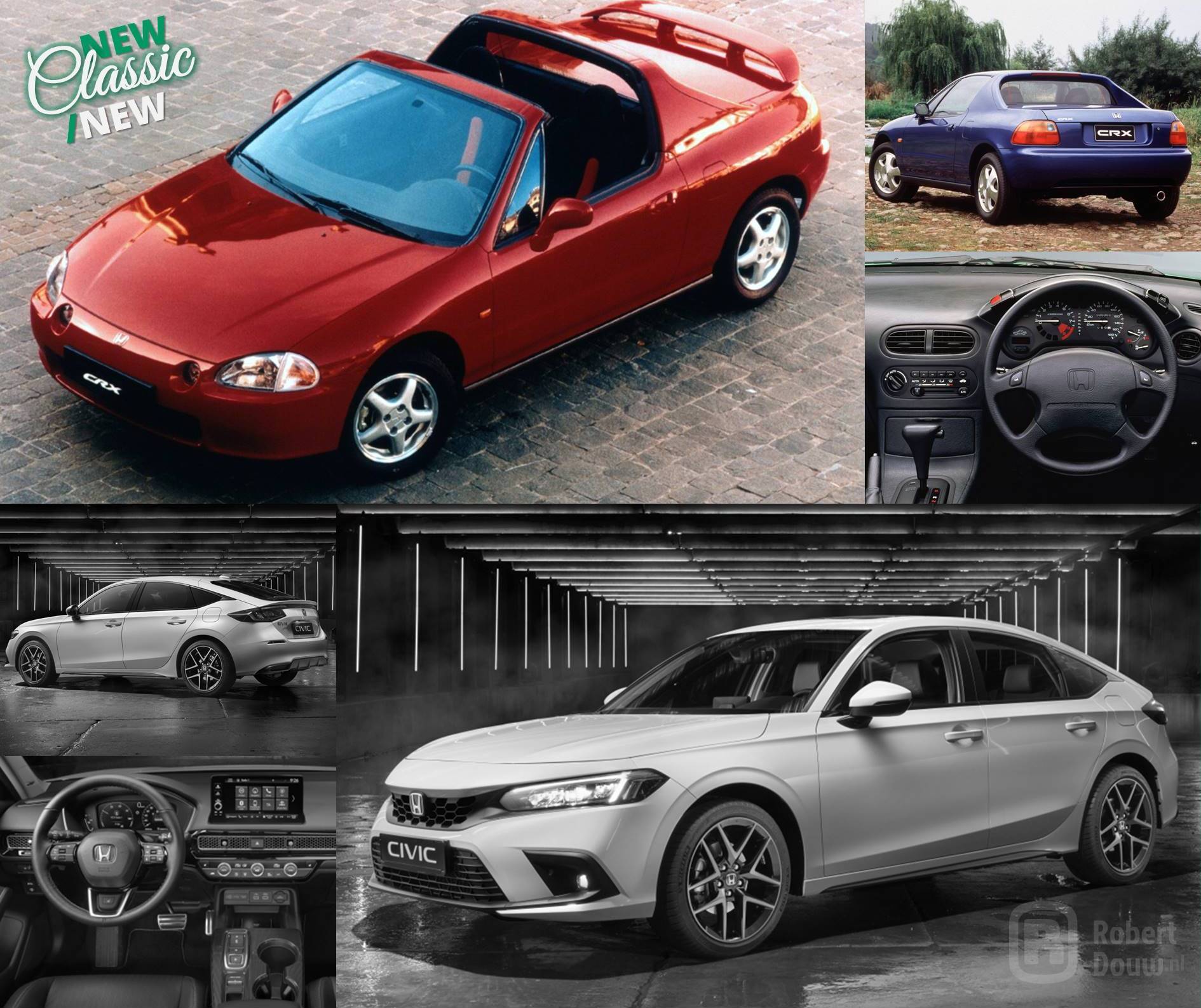
Honda CRX (Del Sol)
/
Honda Civic e:HEV
In 1983 Honda introduced the CRX, a compact coupé (or Kammback) with the technology of the Civic, which was followed in 1987 by a second generation. However, the 1992 CRX Del Sol, sold as CRX in some countries and as Civic Del Sol in others, was a targa. Hence del sol, Spanish for "of the sun". After the Del Sol, there has been no more CRX. The first Insight and the CRZ looked a bit like it in appearance. Honda has never offered a Del Sol-like car again. Today, the just-new Civic e:HEV comes closest, albeit a completely different car.
TO TOP
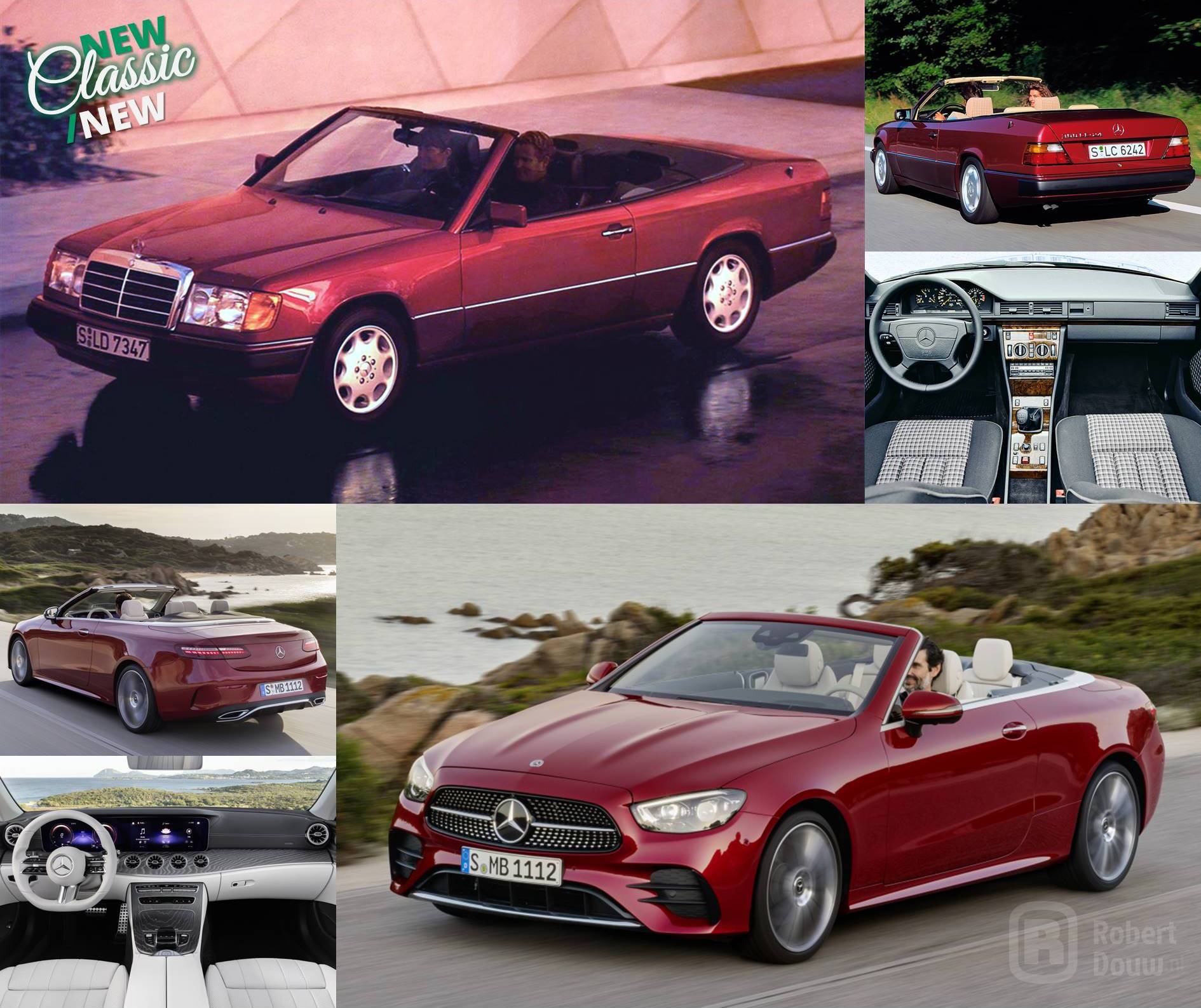
Mercedes-Benz E-Class Cabriolet
/
Mercedes-Benz E-Class Cabriolet
The decrease in the number of convertibles does not apply to the entire car market: while Mercedes-Benz had two open cars on offer in 1992, there are now four. Yet that number has also been higher at Mercedes, because in 2016 the buyer had the choice of no fewer than six cabriolets/roadsters. With the upcoming new C- and E-Class, it is also questionable how long a convertible version will exist of those. Be that as it may, in 1992 the luxury brand from Stuttgart launched the E-Class Cabriolet and now, 20 years later, you can drive with your hair in the wind in its descendant of the same name.
TO TOP
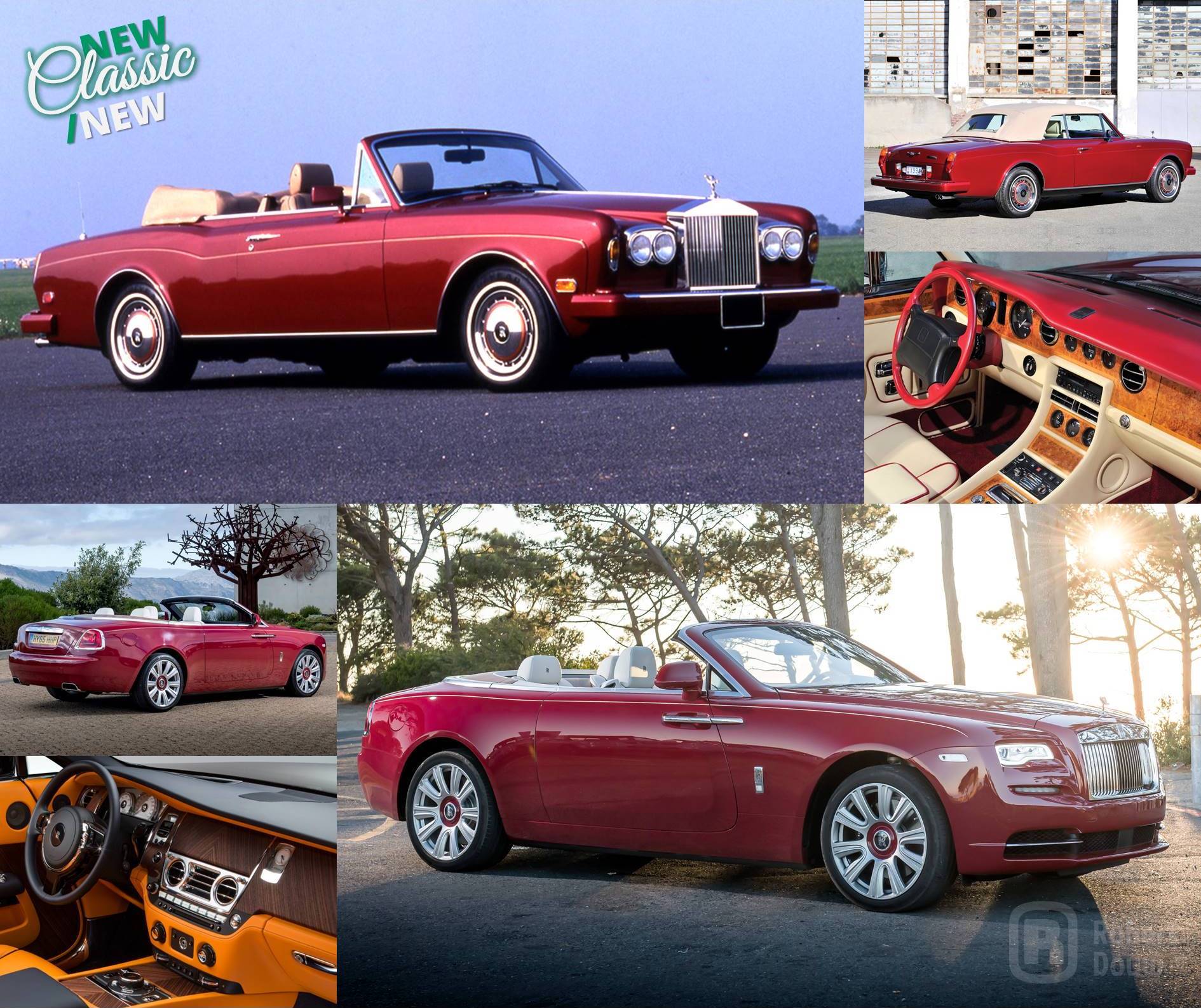
Rolls-Royce Corniche IV
/
Rolls-Royce Dawn
The Corniche IV dates from the time when, so to speak, every Rolls-Royce was also available as a Bentley. The Corniche IV therefore not only resembles the III like two peas in a pod, but also the Bentley Continental. In 1998, Rolls-Royce Motors was bought by Volkswagen, but the trademark rights to the Rolls-Royce name and logo became the property of BMW in 2003, after which Volkswagen continued the company under the name Bentley. As a result, Rolls-Royce and Bentley went their separate ways again and ever since people who want to spend a sack of money on a car really have something to choose from again.
TO TOP
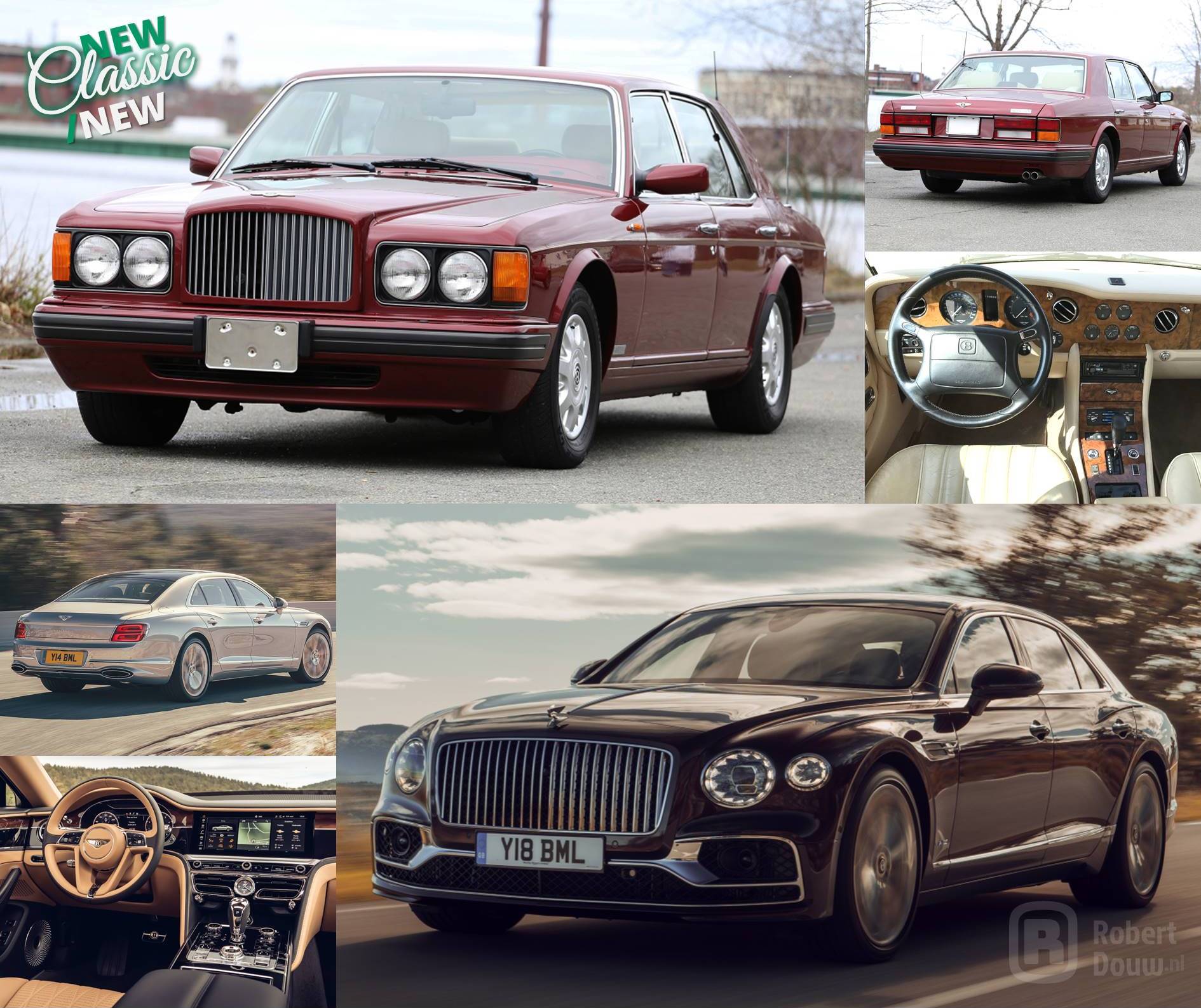
Bentley Brooklands
/
Bentley Flying Spur
While Rolls-Royce introduced the Corniche IV in 1992, sister brand Bentley introduced the Brooklands that year, a modernized Mulsanne S or Eight. And as the Corniche IV had a counterpart in the Continental, the renewed RR Silver Spirit followed in 1993 as a variation on the Brooklands. The latter was succeeded by the Arnage, whose offspring were the Mulsanne and Continental Flying Spur. In that bloodline, only the Flying Spur (without Continental, for more distinction with the GT and GTC) is now for sale new. Without a Rolls-Royce sibling, but wíth the Rolls-Royce Ghost as a competitor.
TO TOP
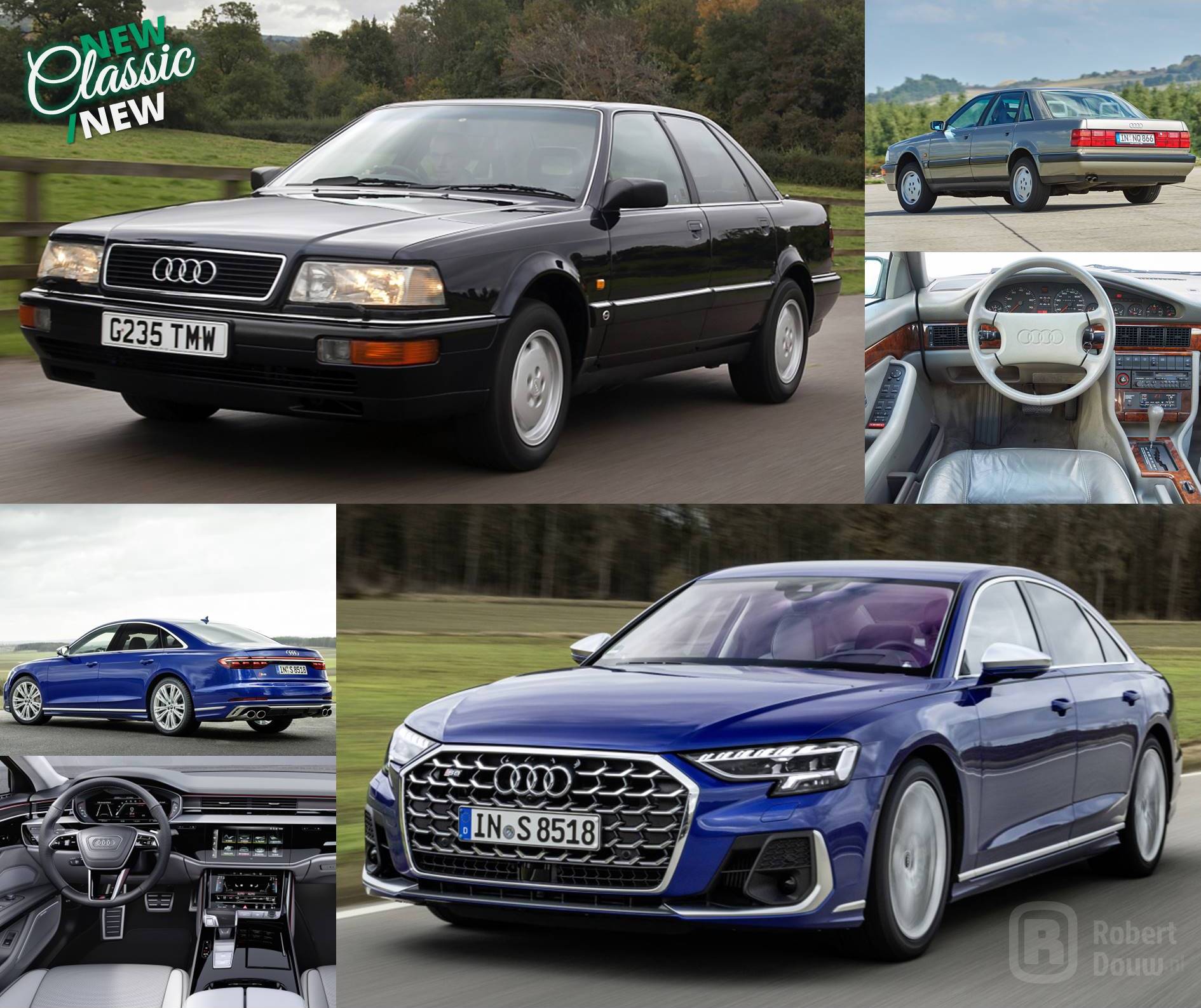
Audi V8 4.2
/
Audi S8
"Audi V8" is not only a designation for the 8-cylinder engine blocks of the brand with the four rings, but also the name of their flagship from 1988-1993. In the 1980s Audi had adapted and built out the 100 and equipped it with a 3.6 V8. In 1992 came the superlative, the 4.2: it delivered 206 kW / 280 hp, distributed over four wheels via the Quattro system. Nowadays Audi only supplies a 4.0 V8 engine in the S8 (the A8 has a V6), but then you do have 420 kW / 571 hp – more than double of the V8 from 1992!
TO TOP
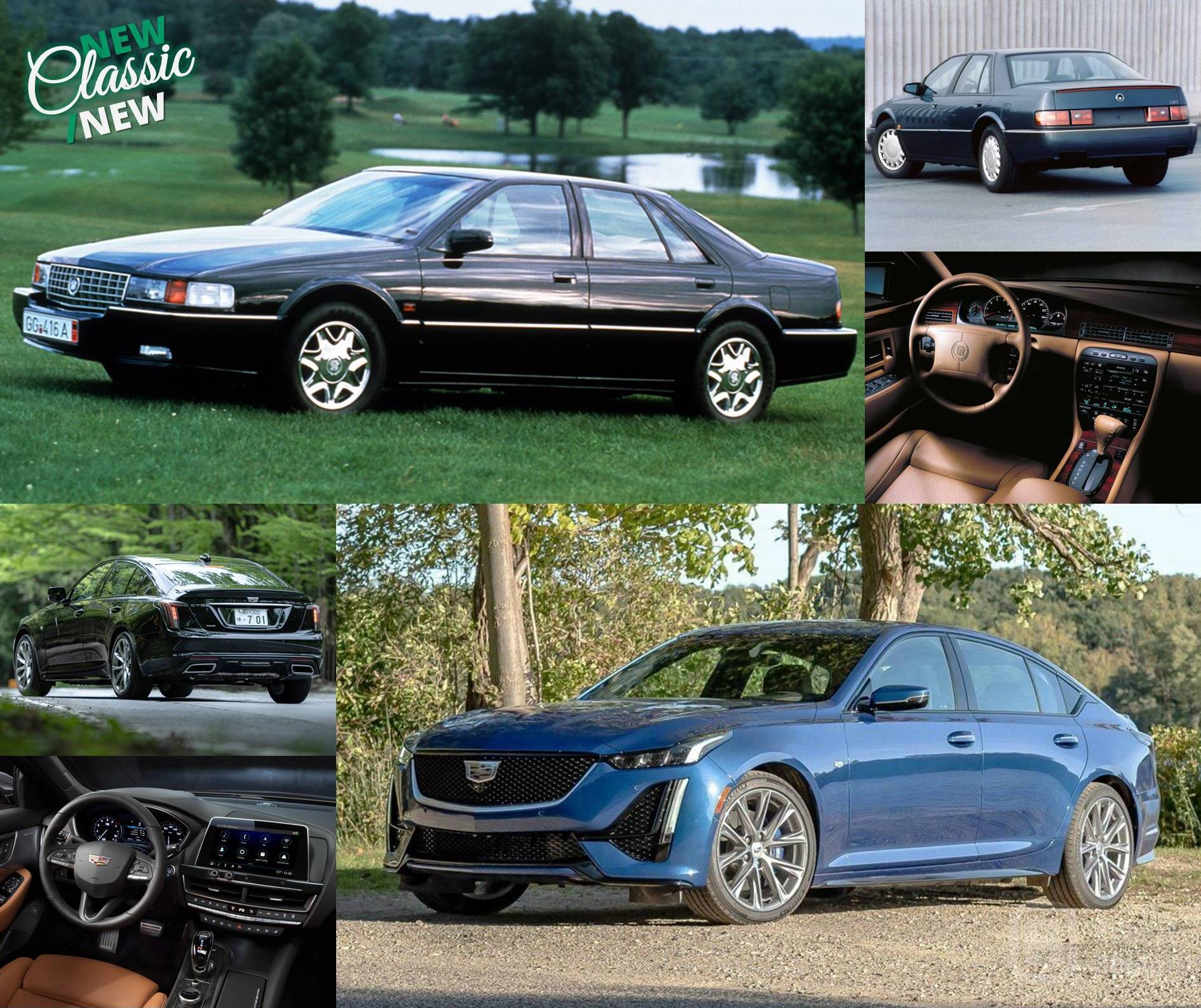
Cadillac Seville
/
Cadillac CT5
American sedans were plentiful in 1992, and you could buy them in Europe too. Now, in 2022, that has completely changed. By instance the Cadillac Seville: it has a descendant in the form of the CT5, but it is not for sale in Europe. In fact, the crossover XT4 is the only Cadillac in the European model range, and even only in a handful of countries. Even though the first Seville was introduced in 1975 as a competitor to the European luxury sedans from Mercedes-Benz, BMW and Audi, to which people at Cadillac feared to lose their position as the luxury brand.
TO TOP
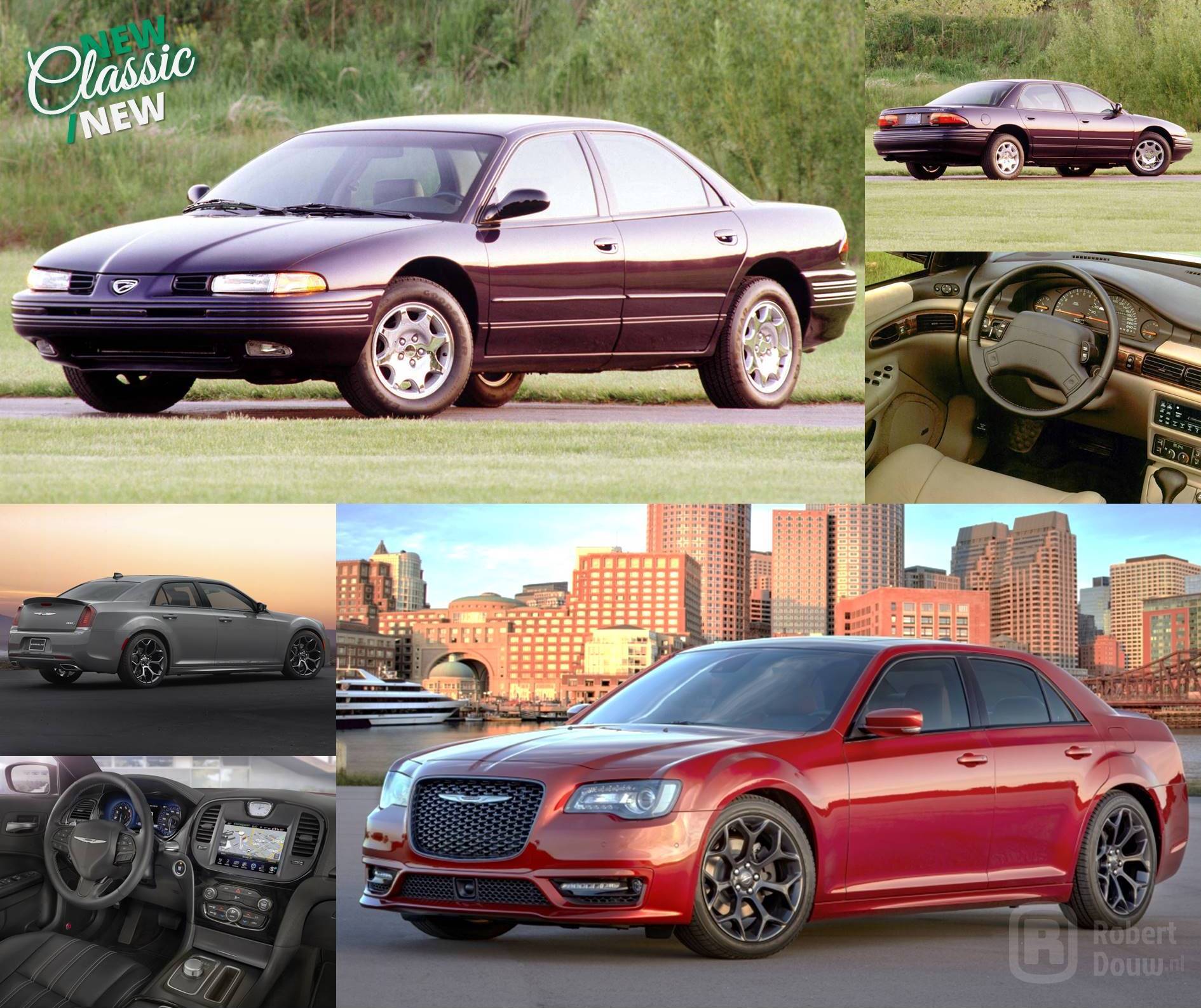
Chrysler Vision
/
Chrysler 300
Chrysler also had a vision of how to tackle European competition, in the form of the Vision. Sold in the US under the Eagle brand, this sedan was instantly recognizable as a Chrysler product due to its cab forward design, with the forward positioned A-pillar and large wheelbase providing a spacious interior. The Vision was intended as a sporty sedan, which at the time meant a slim design. Offspring 300 is a very different car. Chysler has been away from Europe for years, so the 300 also is no longer for sale here (not even as a Lancia, thankfully).
TO TOP
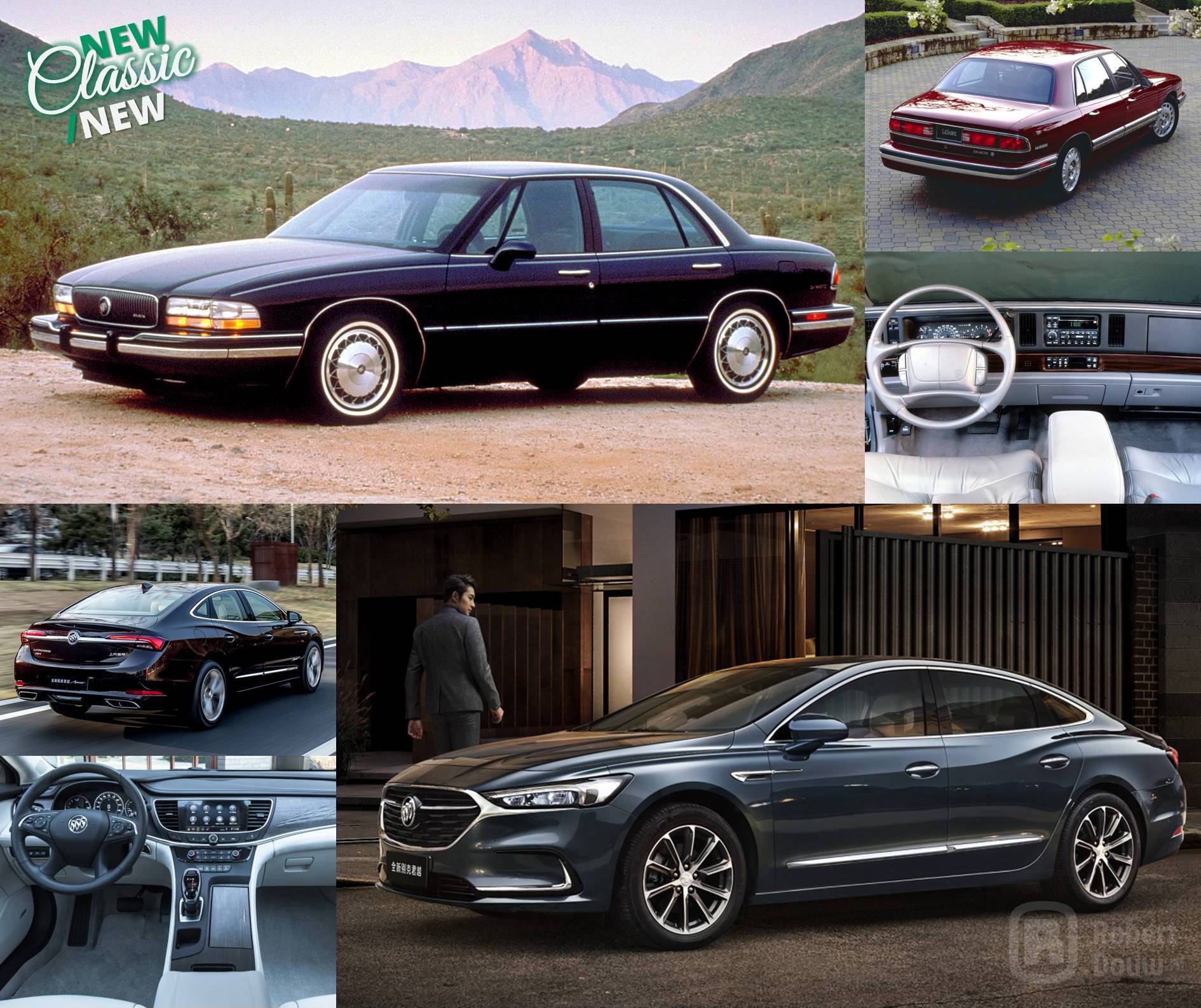
Buick LeSabre
/
Buick LaCrosse
Some American sedans just are no longer for sale in Europe, in other cases the decline of the sedan goes even further. The Buick brand, which already left Europe in 1996, only supplies two SUVs these days in the North American home market, the Encore and Envision. The times when the LeSabre was one of the best-selling cars are decades gone, even in the US. However, there still is a descendant of the 1992 LeSabre: in China, Buick supplies the LaCrosse, in addition to four other sedans. Nonetheless, sedan sales are also slowly declining in China.
TO TOP
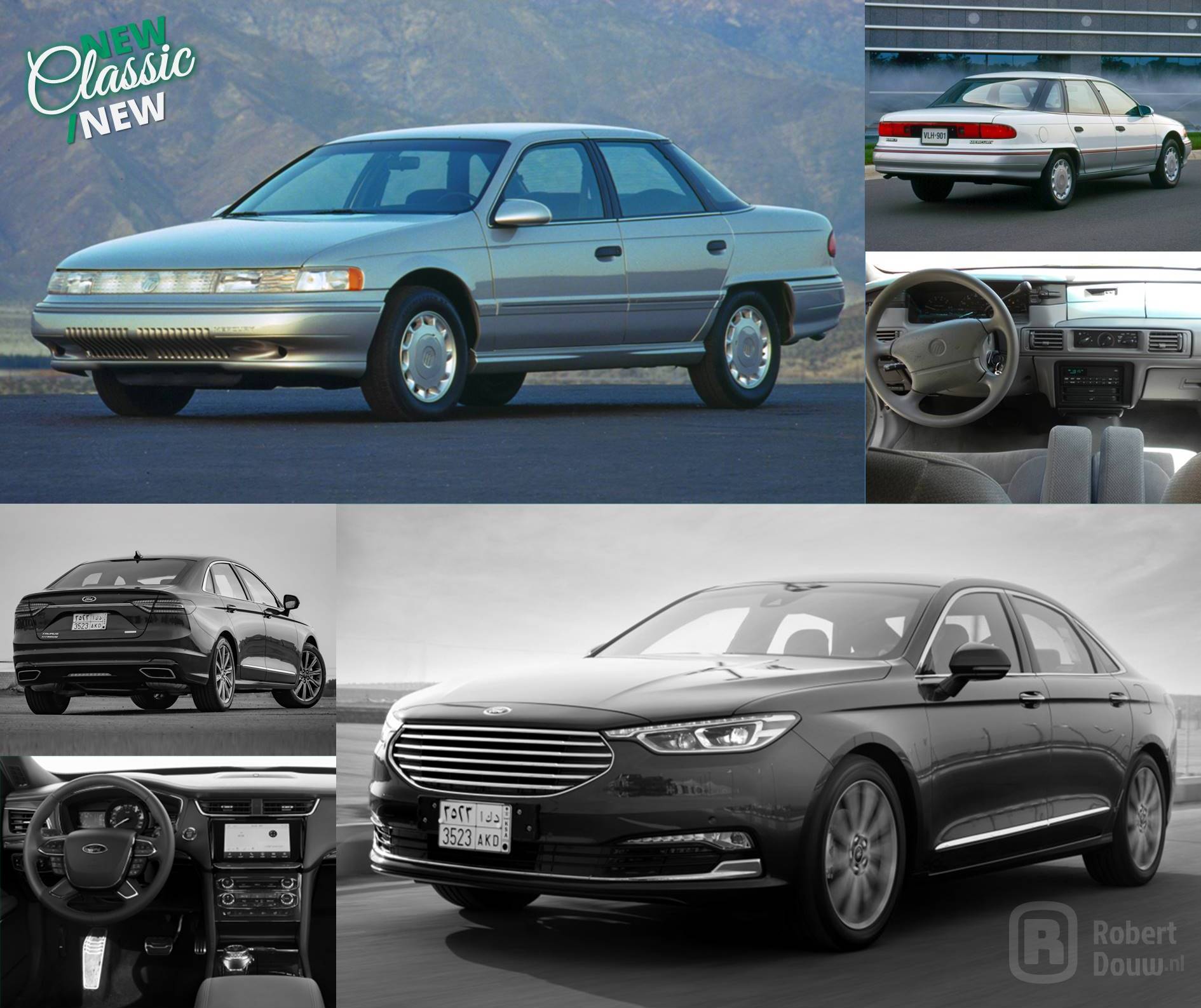
Mercury Sable
/
Ford Taurus
Compared to the Mercury Sable, the fate of the previously described Cadillac, Chrysler and Buick is not so bad. In 2011, the last car under the Mercury brand was built, although it is still an active registered trademark of Ford. The Sable was in fact also a Ford Taurus with different logos. The car that comes closest to a descendant of the Mercury Sable is therefore the current Ford Taurus, which is only for sale in China and the Middle East. In Europe neither the Sable nor the Taurus was very popular; here people preferred sedans a size smaller, like the Ford Sierra.
TO TOP
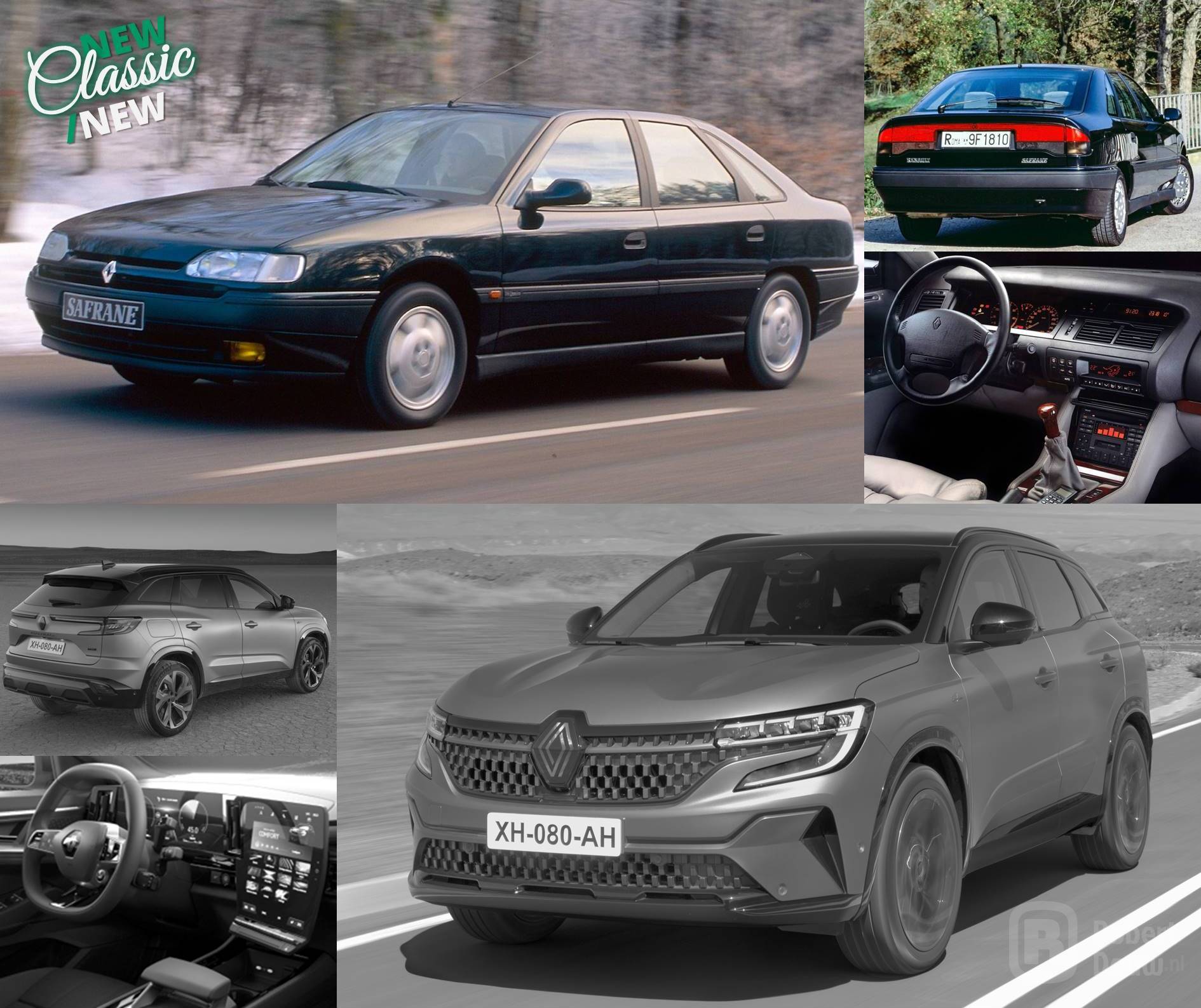
Renault Safrane
/
Renault Austral
Not only American brands struggled with the competition from the Big German Three. In 1992, Renault made a penultimate attempt at success in the E-segment with the Safrane; according to good Renault usage not a sedan, but a hatchback. The latter also applied to its successor, the Vel Satis. Whereas BMW managed to sell 1,331,056 copies of the 5 Series (E34), the Renault only sold 310,000 Safranes. The Vel Satis even only came to 62,201 copes. Today, the largest Renault is the Austral, an SUV that can be seen in the lineage of the Laguna or Mégane rather than that of the Safrane.
TO TOP
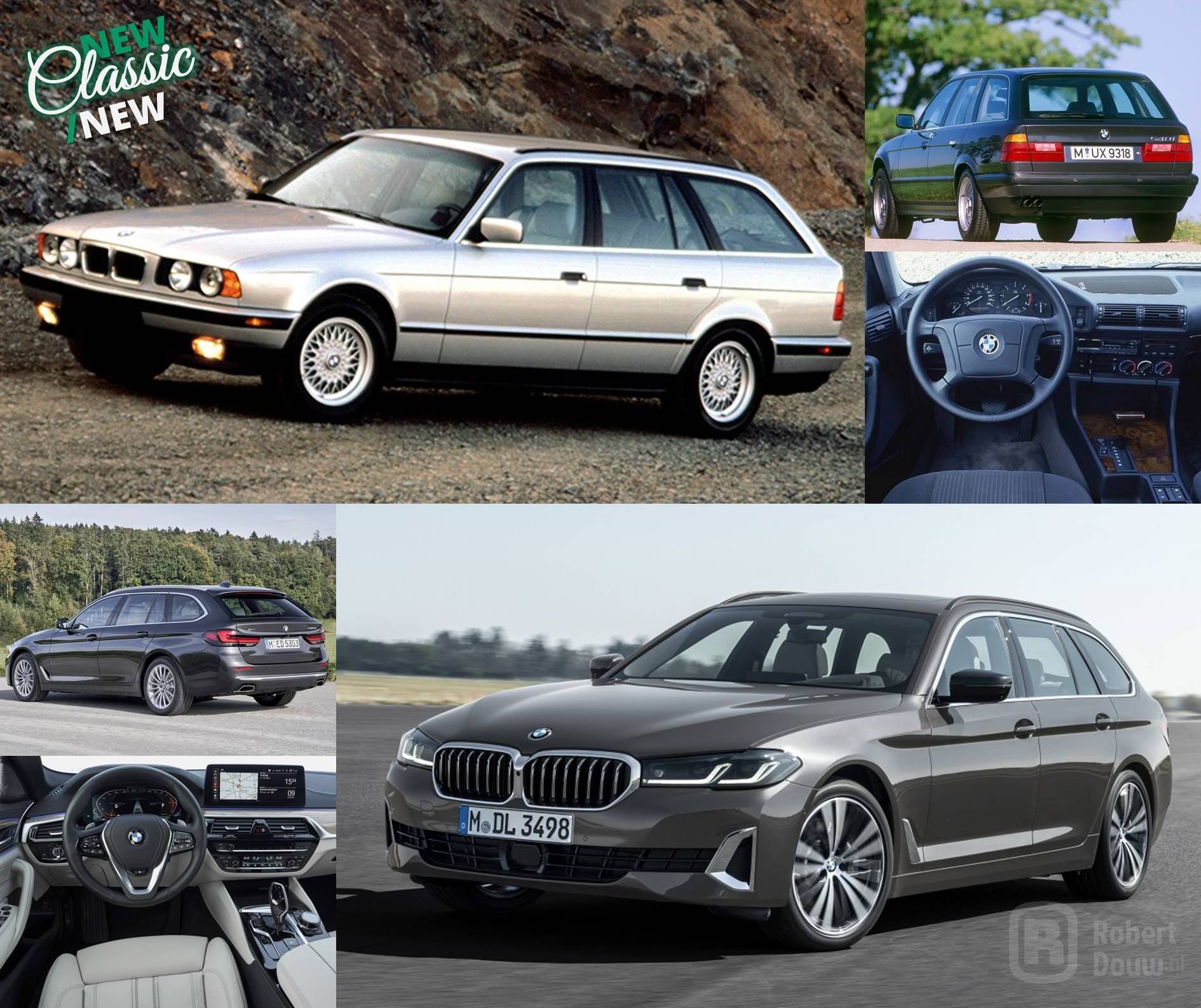
BMW 5 Series Touring
/
BMW 5 Series Touring
BMW may have been one of the major competitors of the previous cars, but things don't happen automatically at the Bavarian Motor Factories either. In order to expand their market share, BMW not only made the 5-Series (E34) a much better car than its predecessor, but also added a station wagon to the range for the first time in 1992. And with success. The 5 Series is still available as a sedan and as a Touring, in the current generation among other things with a plug-in hybrid powertrain. The next one (introduction expected in 2023) will also come as all electric i5.
TO TOP
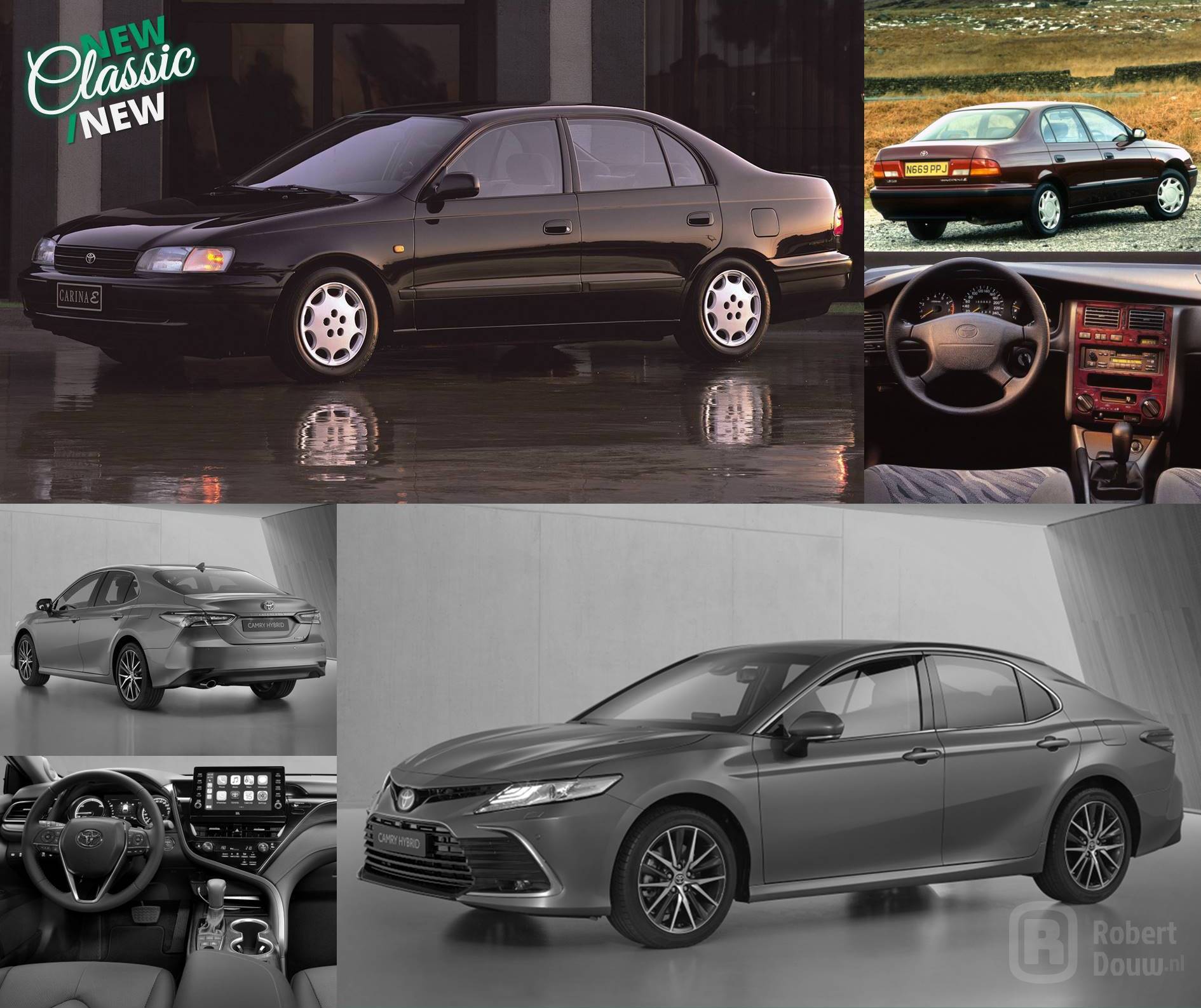
Toyota Carina E
/
Toyota Camry
In addition to the Corolla, Toyota introduced the Carina E in 1992. The E was supposed to indicate that the car was specially developed for Europe and was also built in Europe (the UK), even though it had many similarities with the Corona sold in Asia. The Corona was succeeded by the Camry, which was also sold in Europe, but as a larger sedan above the Avensis, the real successor to the Carina E. The Avensis grew, the Camry disappeared from the European market. Toyota stopped production of the Avensis in 2018 and from 2019 the Camry Hybrid may fill that gap in the European market.
TO TOP
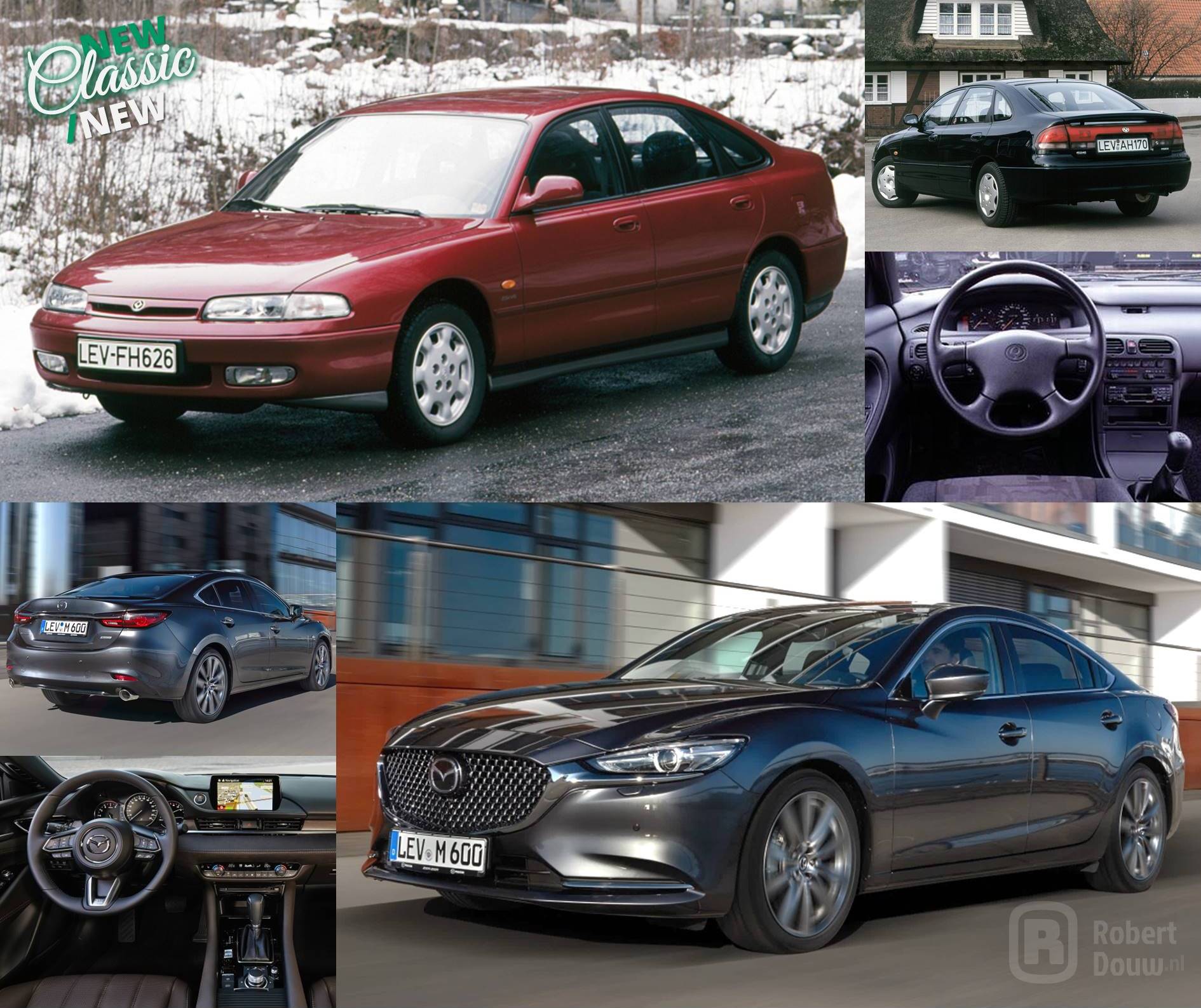
Mazda 626
/
Mazda6
Nowadays a sedan in the D-segment is no longer a matter of course. The fact that the current 6 basically dates from 2013 speaks volumes. However, in 1992 Mazda introduced no fewer than two sedans in the D-segment. The first of these was the 626, with the European version differing from the Japanese and American models. In Europe, you could also get the 626 as the liftback pictured above. It had a spoiler integrated into the tailgate, a unique design element. If you wanted a station wagon, you had to settle for the previous generation 626.
TO TOP
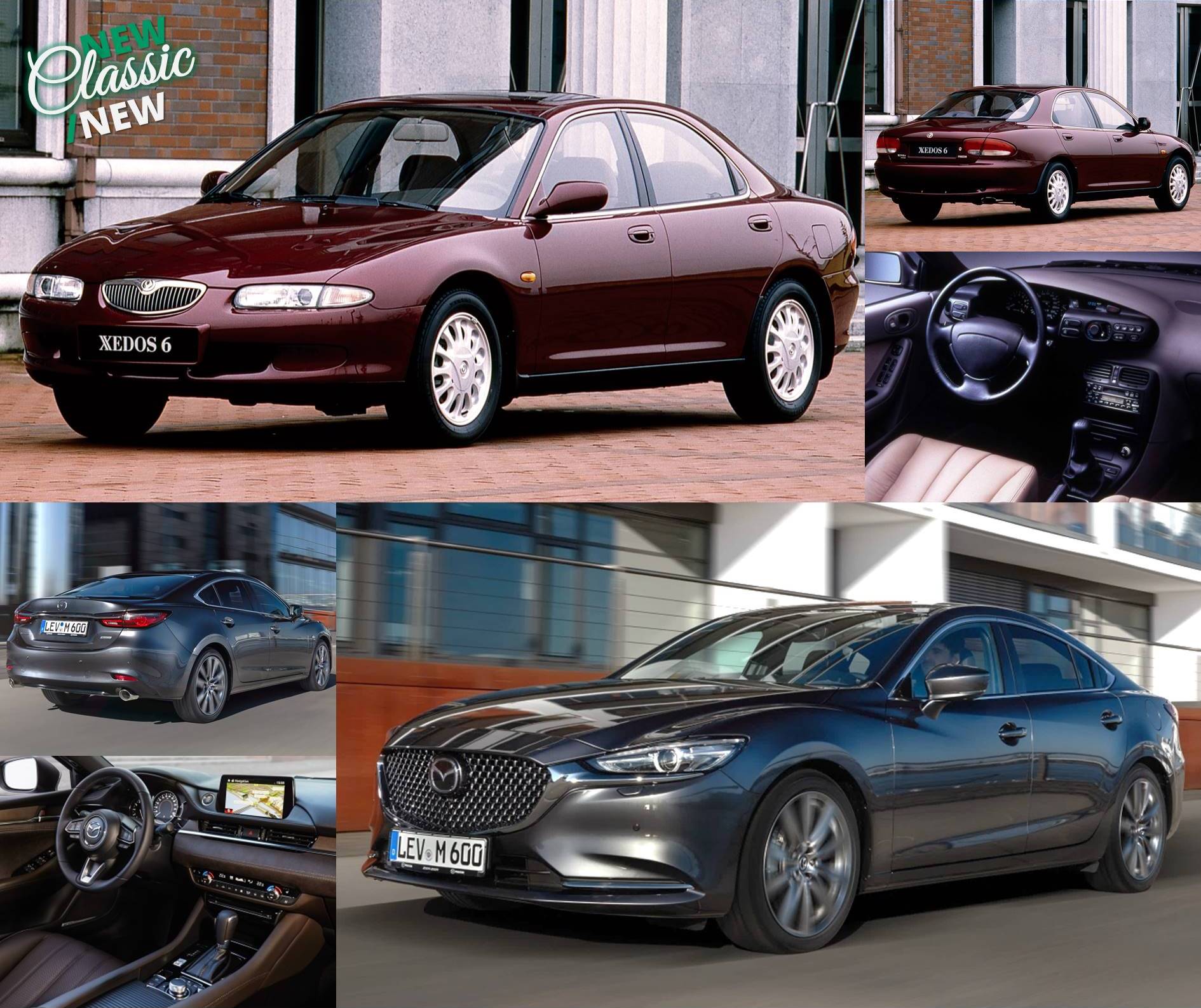
Mazda Xedos 6
/
Mazda6
The second D-sedan that Mazda launched in 1992 was the Xedos 6. With that not only a new model was introduced, but also a new brand - like Toyota has Lexus. Xedos however did not become the hoped-for success and after only two years the Xedos 6 became the Mazda Xedos 6. In 1999 it was over for that model, in 2002 for Xedos as a sub-brand. In that year, the first Mazda6 was unveiled, which in design was more reminiscent of the Xedos 6 than of the Mazda 626. As far as I'm concerned, the current 6 can therefore be seen as a descendant of the Xedos 6.
TO TOP
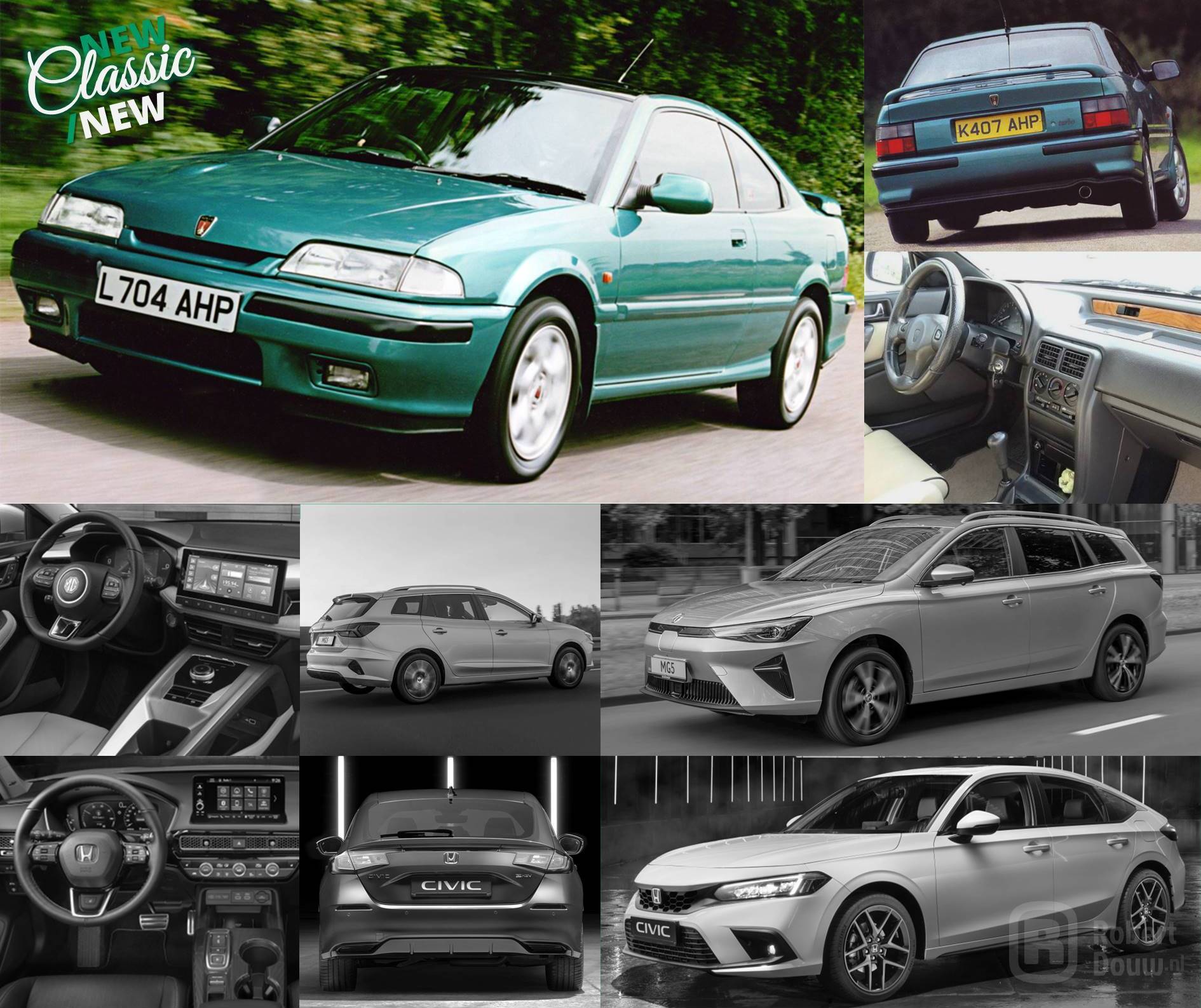
Rover 200 Coupé
/
MG5 Electric / Honda Civic e:HEV
It's already been 17 years since the MG Rover Group ceased to exist. The Chinese Nanjing Automobile Group, which merged in 2007 with the also Chinese SAIC, took over the rights to the models and the MG brand name; but not the Rover brand name. MG is now back on the European market. If you follow the line Rover 200 > Rover 25 > MG ZR, you end up at the MG5, "The world's first electric station wagon". Since the 200 was based on the Honda Civic, the most recent Civic could also be seen as a descendant of the 200. The 200 Coupé, like many coupés, did not receive a direct successor.
TO TOP
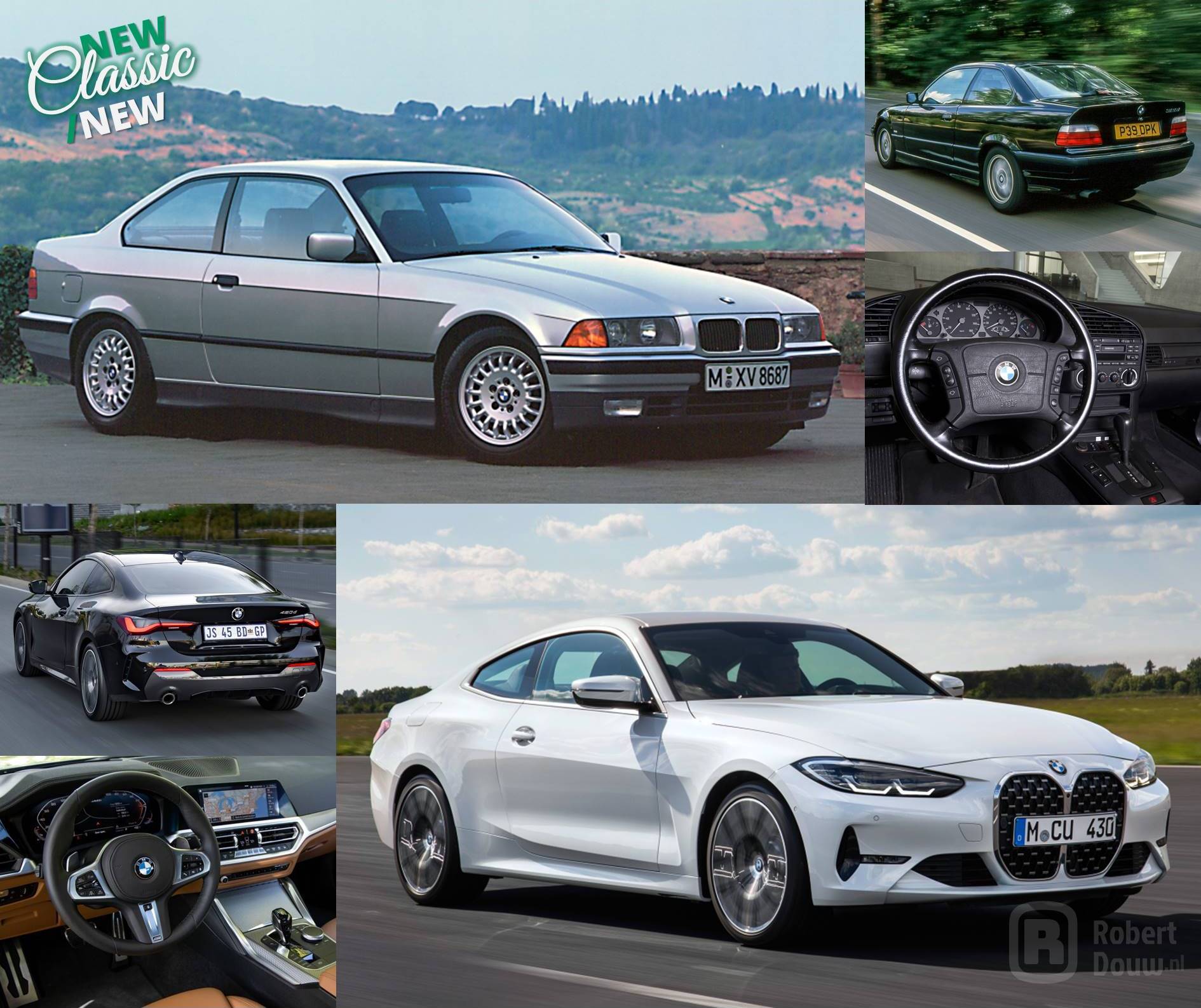
BMW 3 Series Coupé
/
BMW 4 Series Coupé
When the 3 Series Coupé came on the market, this body shape was seen as a derivative of the sedan. In a way, however, the Coupé is closer to the first 3 Series, as it was only available as a two-door. The 1992 Coupe also looks a bit like a two-door sedan. Over the years, the Coupé increasingly acquired its own appearance and in 2014 it became a separate model line with the convertible and four-door Gran Coupé under the name 4 Series. The current 4er has a very expressive design, while its predecessors had a more elegant appearance.
TO TOP
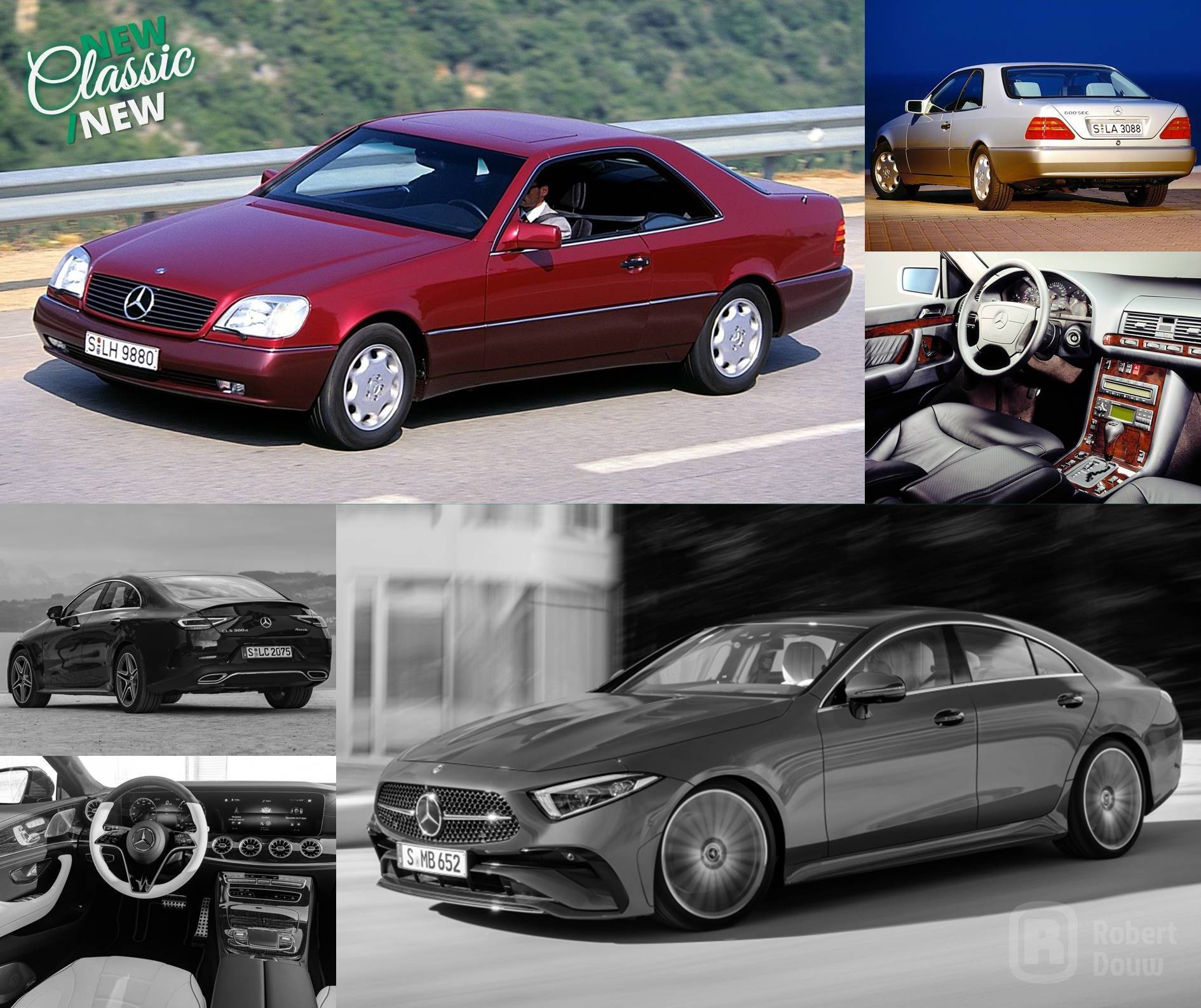
Mercedes-Benz S-Class Coupé
/
Mercedes-Benz CLS
Since the 1951 W187, Mercedes-Benz has always built a coupé of their flagship. Despite different names, including SEC and CL, the S-Class Coupé was a fixture for decades. It was therefore no surprise that of the S-Class presented in 1991 a Coupé also appeared a year later. However, of the latest S, of 2020, no coupé version will be built. As a result, the last S-Class Coupé left the production line in 2021. The current model that comes closest to that is the CLS, which falls in size between the E- and S-Class and has two extra doors.
TO TOP
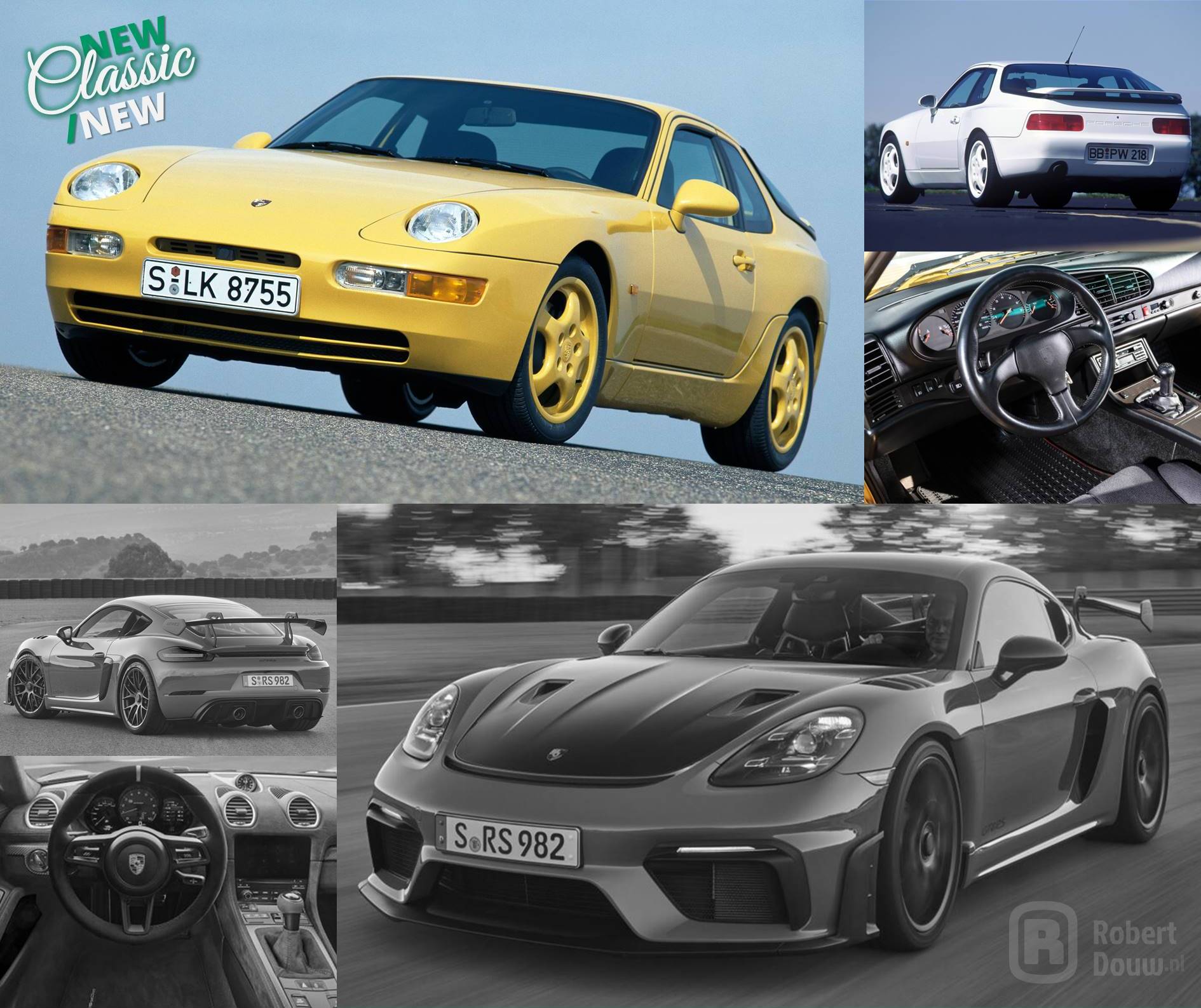
Porsche 968 Club Sport
/
Porsche 718 Cayman GT4 RS
The Porsche 968 was a further development of the 944. In 1992 Porsche added the Club Sport, with a lower weight for better performance on the track. The "entry-level model" from Porsche did not receive a direct successor, but the Cayman can be seen as a descendant. Although the 718 Cayman GT4 RS is also a higher performance version, it is a very different car than the 968 Club Sport. The GT4 RS is slightly heavier, has more than double the power and has the engine behind the seats. The GT4 RS is also available in a Clubsport version. That is even more than the 968 CS a track car.
TO TOP
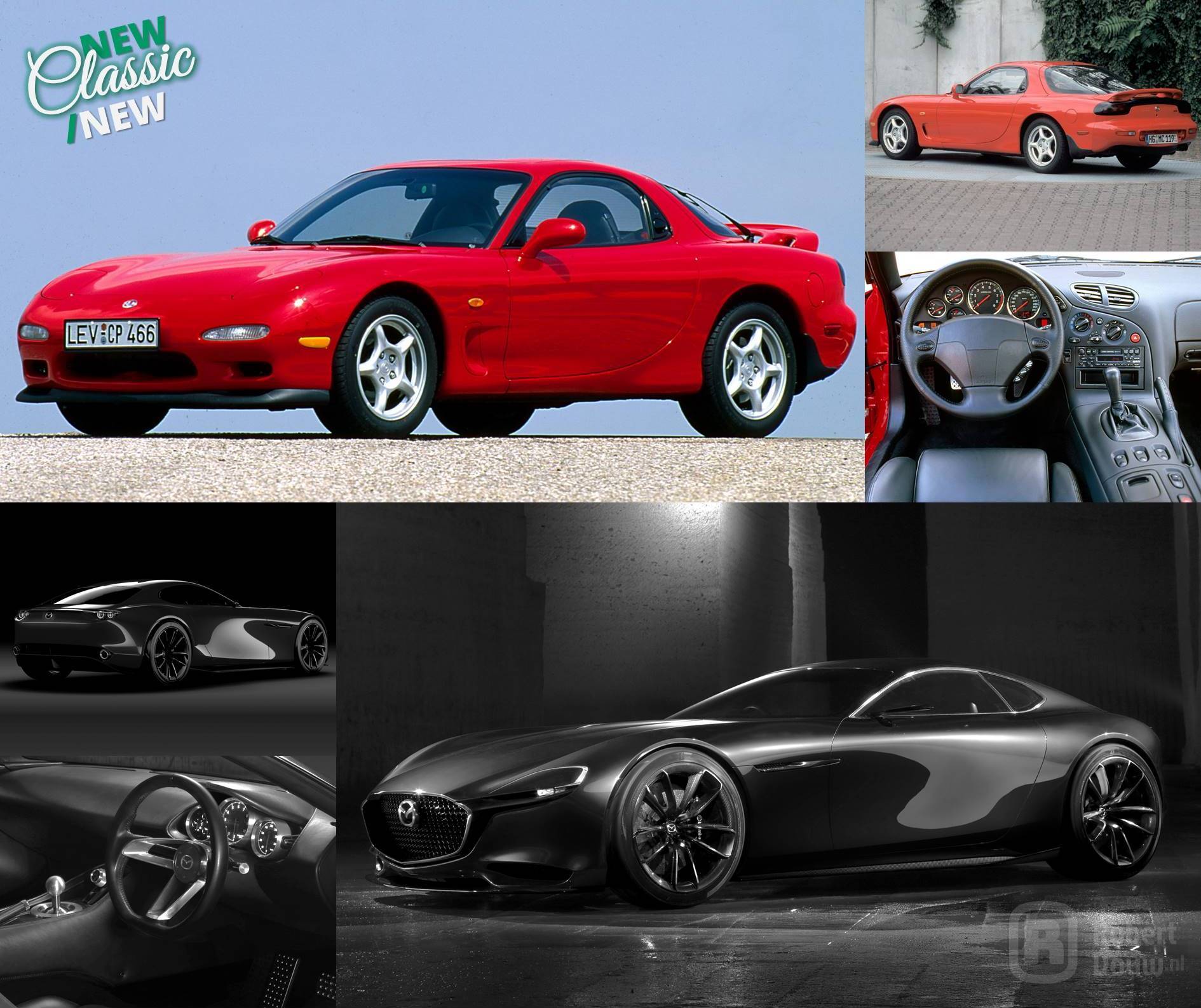
Mazda RX-7
/
Mazda RX-Vision Concept
Felix Wankel was working for NSU when he invented the rotary engine. Mazda soon became interested in this technology, further developing it and using it mainly in production cars. A disadvantage of the rotary engine is a higher fuel consumption than with an engine with cylinders and pistons. That's why Mazda, from the oil crises, only used them in sports cars, such as the 1992 RX-7 and the 2002 RX-8. Unfortunately, the 2015 RX-Vision concept car did not go into production. So there is no descendant of the RX-7 for sale and with the current electrification the chance of this seems small.
TO TOP
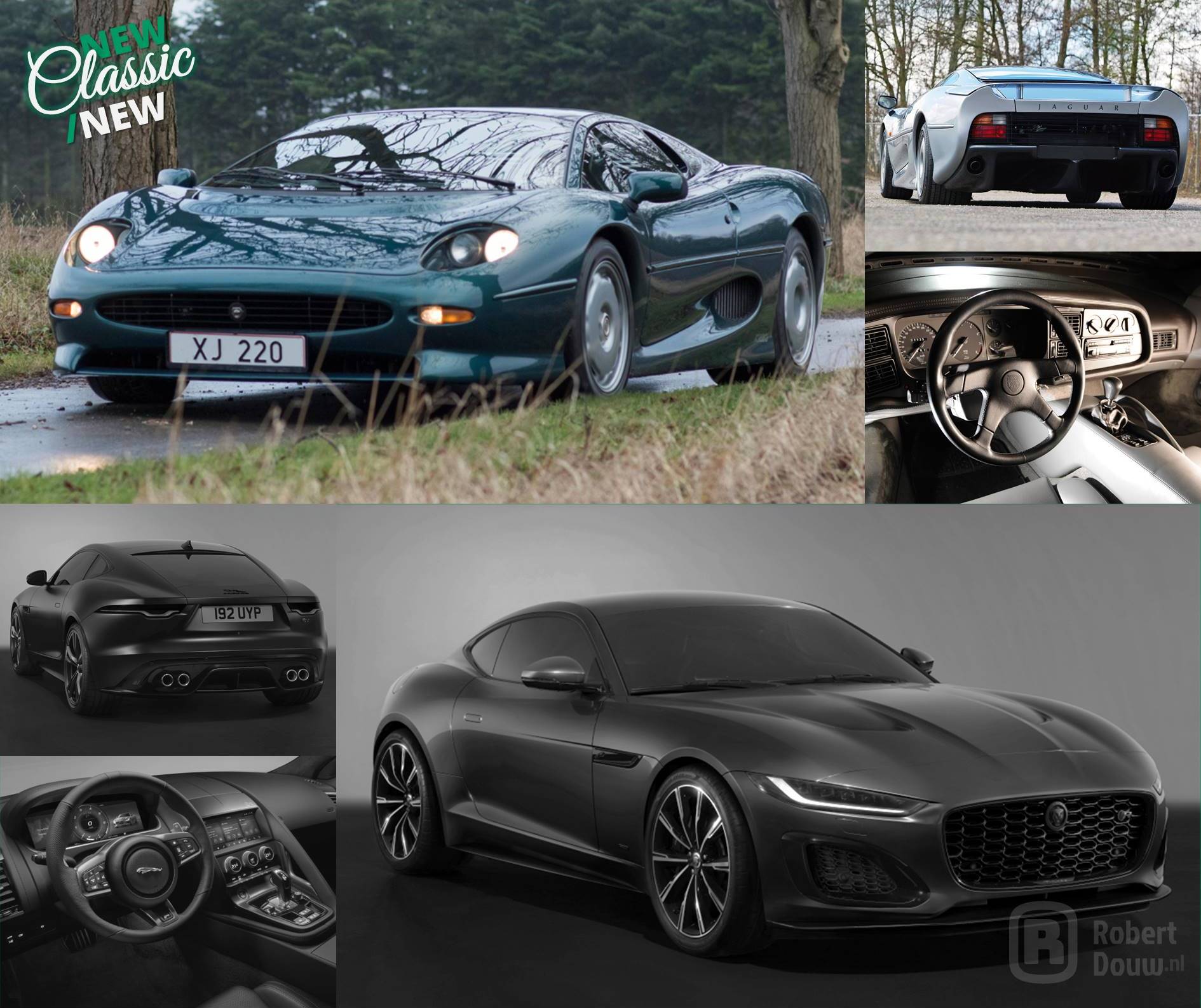
Jaguar XJ220
/
Jaguar F-Type R
The automotive world has changed a lot over the last decades and will continue to do so. That doesn't just apply to sedans and SUVs. Take the Jaguar XJ220, for example: in 1992 it was a supercar and one of the fastest production cars ever. The XJ220 never got a successor. The F-Type R75 is now Jaguar's sporty top model, but not a supercar. Yet the R75 has a larger engine with more power than the XJ220 and the R75 is also a little faster from 0-100 km/h. At the same time, the F-type is Jaguar's last sports car with a petrol engine. The curtain will fall in 2023 and a possible successor will be electric.
XJ220: 3498 cc V6, 542 pk/hp, 405 kW (644 Nm), max. 341,7 km/h (212.3 mph), 0-100 km/h in 3,8 sec. (0-60 mph in 3,6 sec.)
F-Type R75: 5000 cc V8, 575 pk/hp, 423 kW (700 Nm), max. 300 km/h (186 mph), 0-100 km/h in 3,7 sec. (0-60 mph in 3,5 sec.)
TO TOP
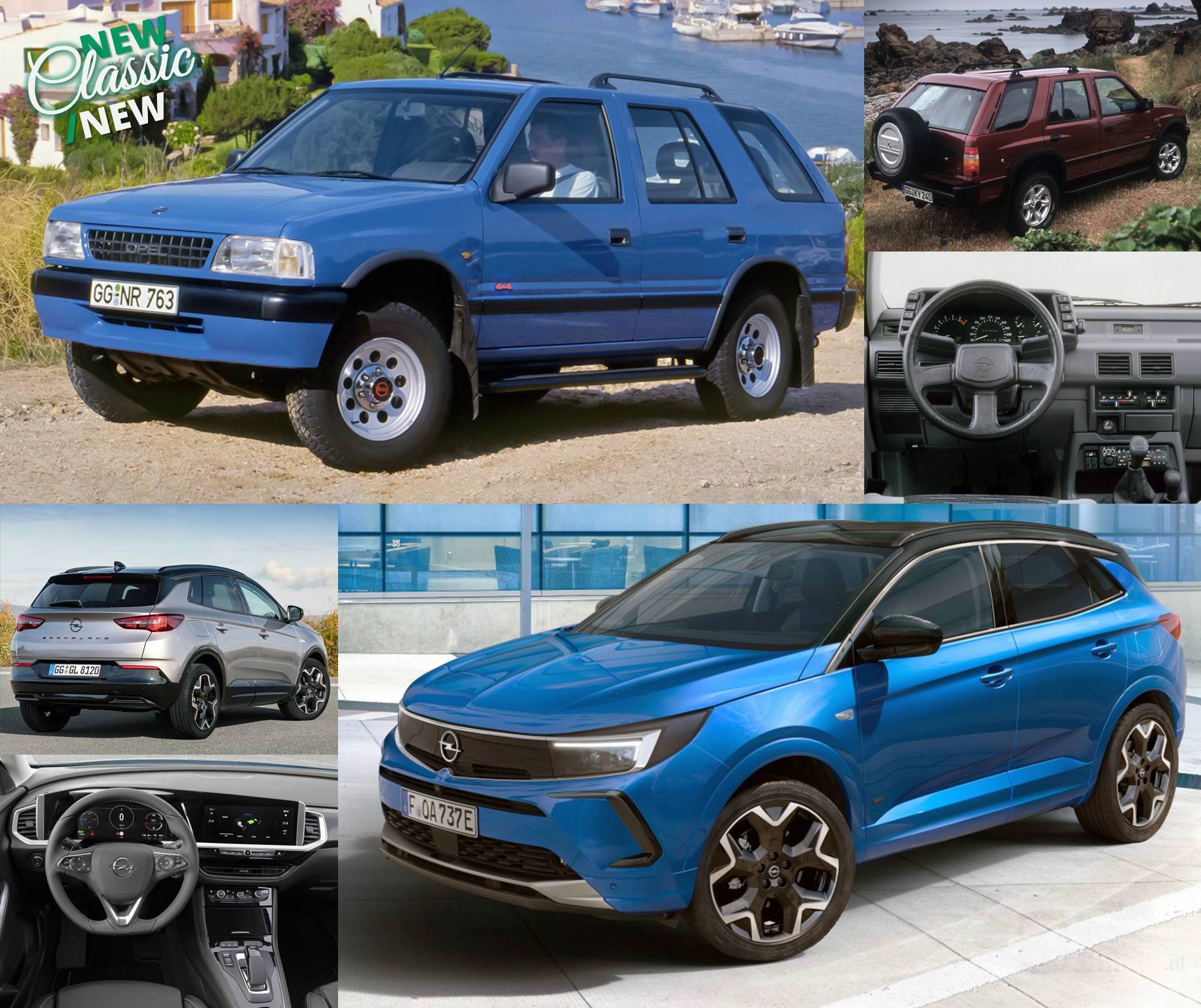
Opel Frontera
/
Opel Grandland
Nowadays, just about every brand has at least one SUV in its range, but in 1992 Opel led the way with the Frontera. Besides the five-door, which in some markets received the addition of Wagon, there was a three-door, which was called Frontera Sport. Opel's all-terrain vehicle was a license-built Isuzu, which was also sold under several other brand names. In 1993 and 1994 it was the best-selling all-terrain vehicle in Europe. The second generation Frontera followed in 1998, in 2006 the Antara and in 2017 the Grandland X, which has no X behind its name since the facelift in 2021.
TO TOP
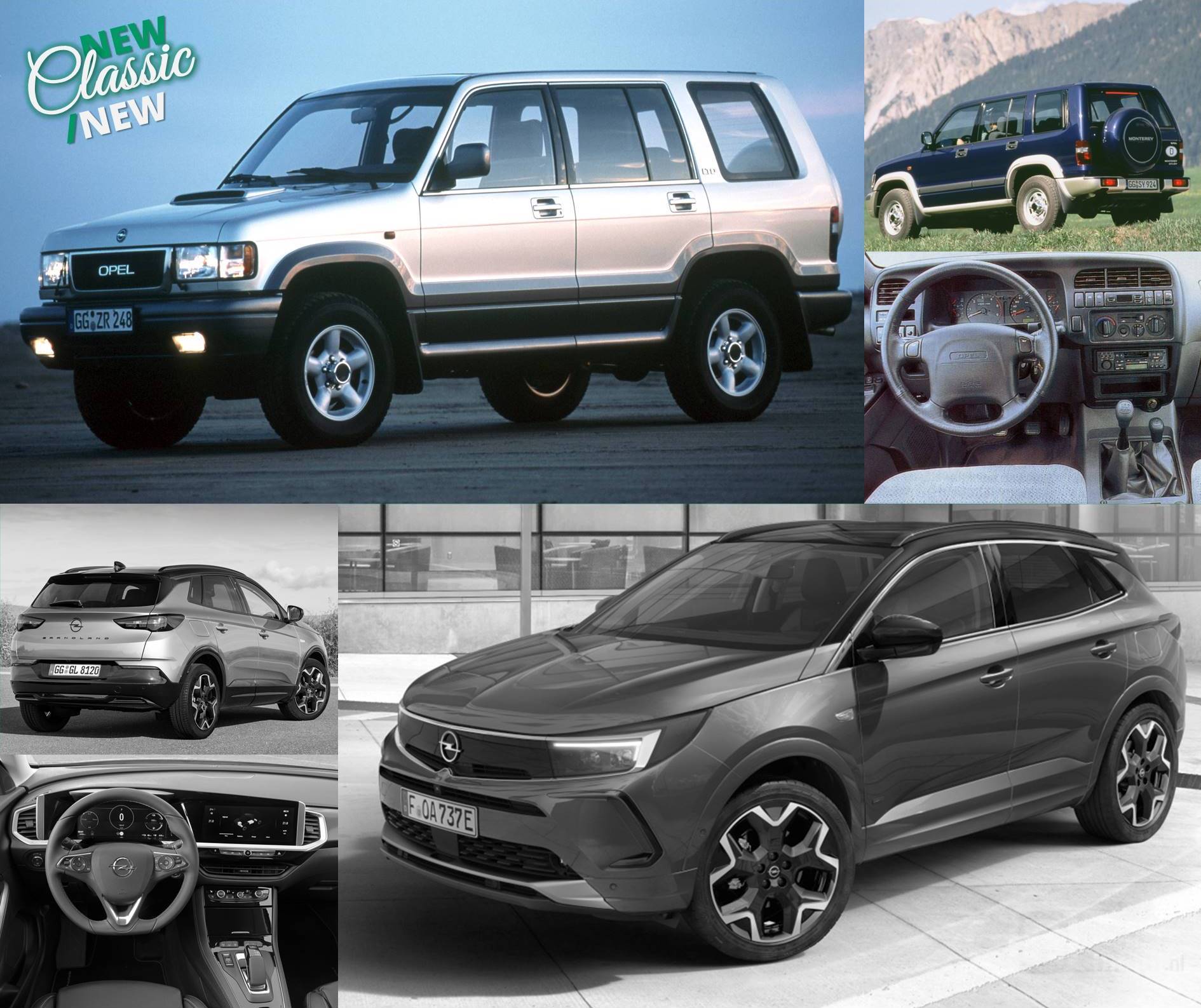
Opel Monterey
/
Opel Grandland
Like the Frontera, the Opel Monterey was an off-road vehicle built for Europe under license from Isuzu, available in three and five-door versions and sold worldwide under various brand and model names. The Monterey was larger and more luxurious than the Frontera, but also sold less well. In 1999 the curtain fell for the Opel Monterey, without a successor. The Grandland is the car in the current Opel range that comes closest; in terms of length and width, they only differ a few centimeters.
TO TOP
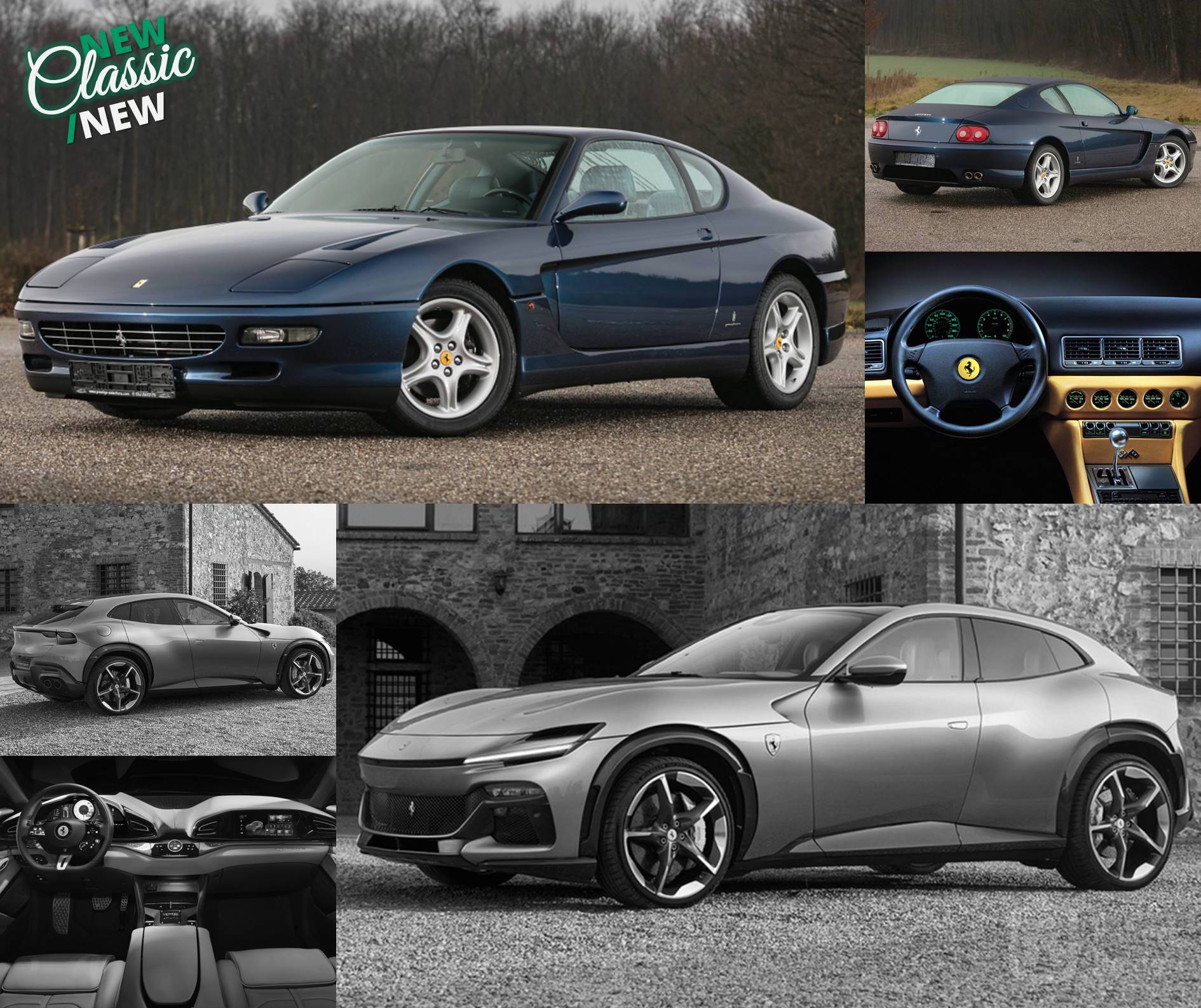
Ferrari 456 GT
/
Ferrari Purosangue
The collaboration between Ferrari and Pininfarina has produced beautiful sports cars for decades. The 456 GT, in my opinion the most beautiful of all the cars introduced in 1992, is certainly one of them. I like it best in dark blue metallic. After the 456 GT, Ferrari's four-seater V12 coupé bloodline continues through the 612 Scaglietti and the FF, although that was already more of a fastback, ending with the GTC4Lusso. The Purosangue is also a four-seater with a V12, but is a five-door crossover and in that sense not a direct descendant of the 456 GT.
TO TOP
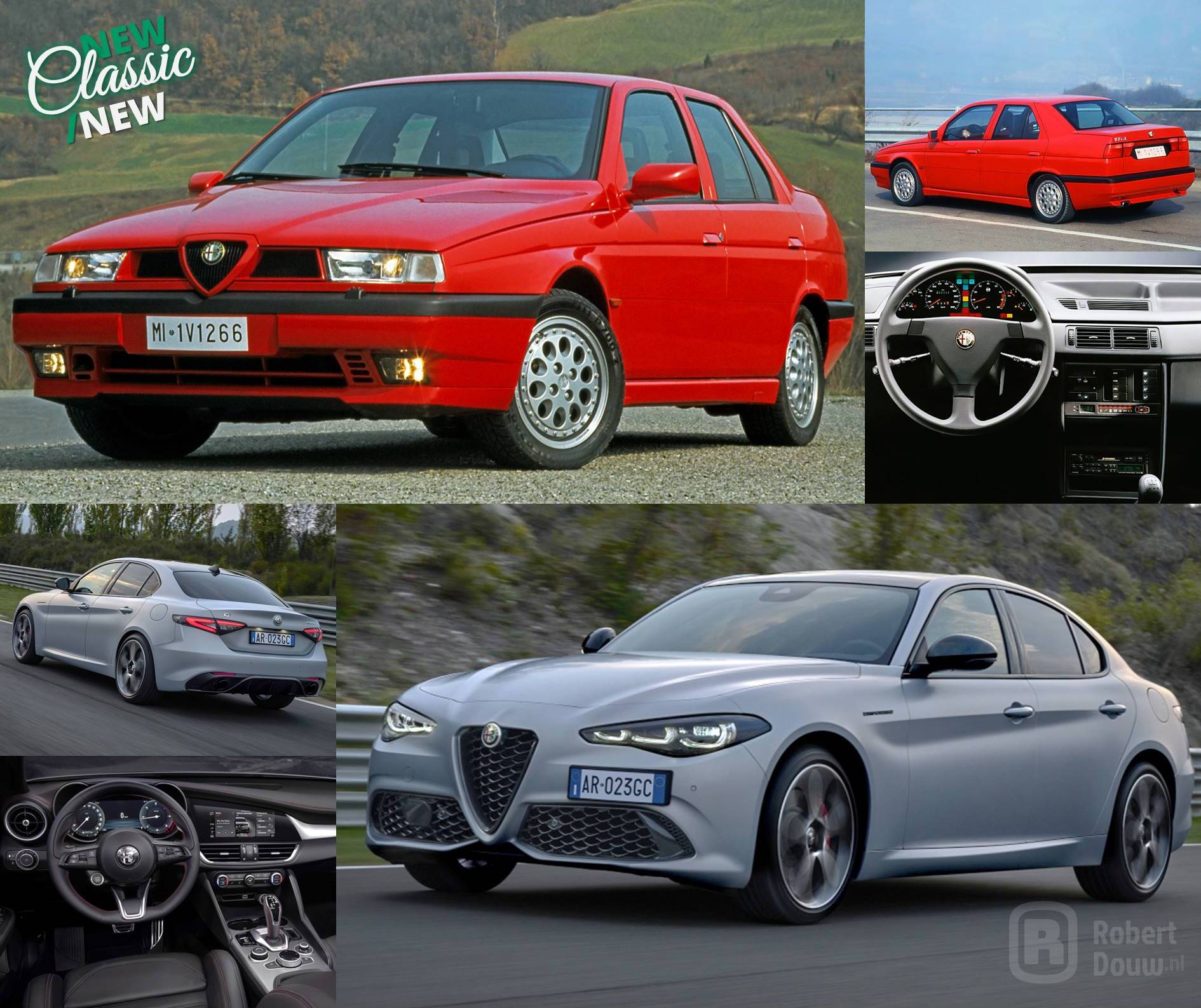
Alfa Romeo 155
/
Alfa Romeo Giulia
With the 155, Alfa Romeo switched to front-wheel drive, a disappointment for many enthusiasts. Predecessor 75 had rear-wheel drive. However, in 1986 Alfa Romeo had been taken over by Fiat and the 155 shared its platform with the Fiat Tempra and Lancia Dedra. With the introduction of the Giulia in 2016, Alfa Romeo made the opposite move: the Giulia got rear-wheel drive. Still, the Giulia has so far sold less well than the 155, which in turn already underperformed the 156, 159 and 75. Perhaps the 2022 facelift can help the Giulia a bit.
TO TOP
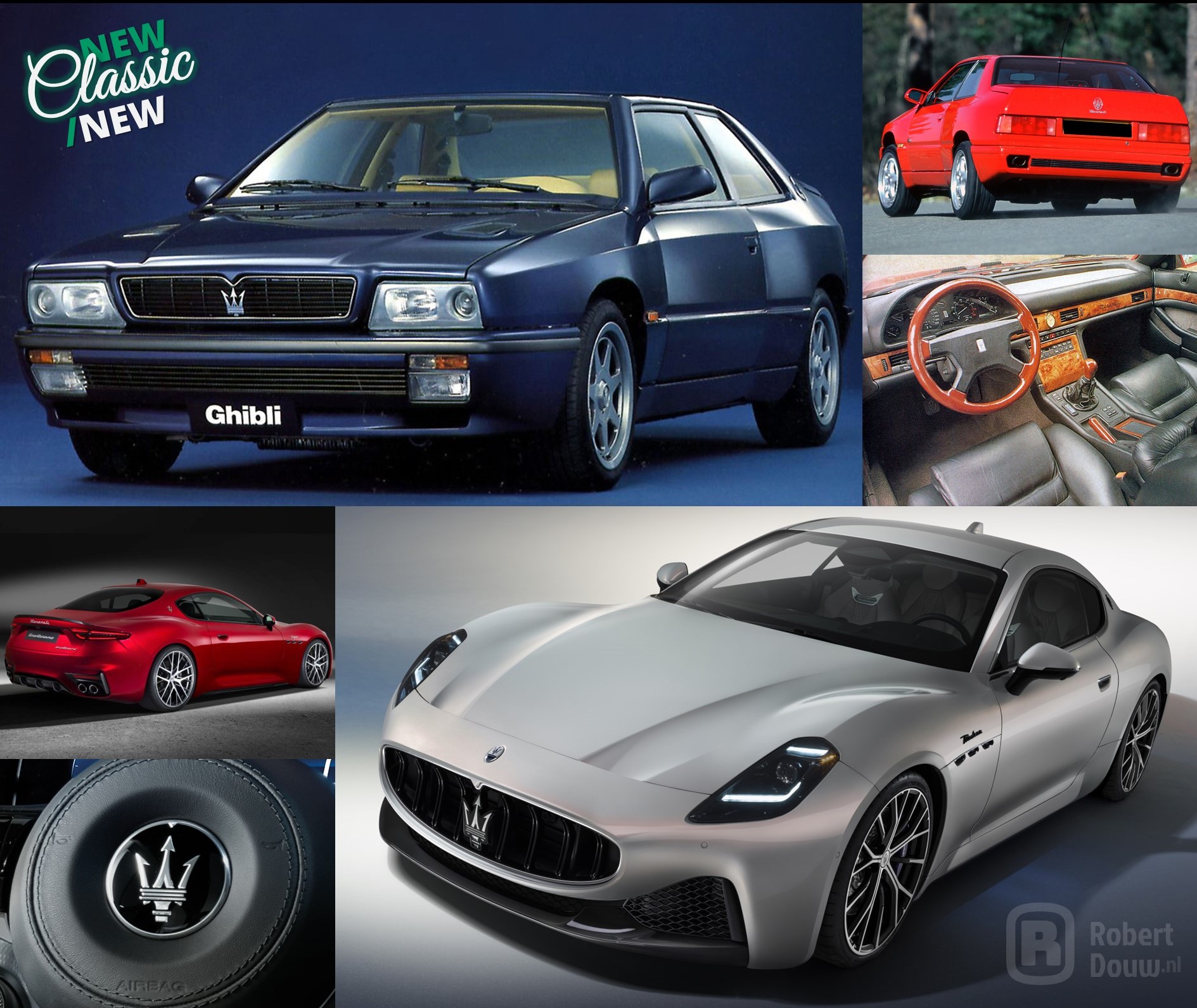
Maserati Ghibli
/
Maserati GranTurismo (2023)
At the time of writing, there is no offspring of the Ghibli for sale, but it has already been announced: the new GranTurismo will arrive in 2023. Like the Ghibli, the GranTurismo will have a V6, but the top version will be the electric Folgore (Italian for thunderbolt). That again marks the difference between 1992 and 2022: the 306 hp of the Ghibli is no longer exceptional; the GranTurismo Folgore has 761. They are only whisper quiet horses that take you to 100 km/h in 2.7 seconds and that lack of engine noise will still take some getting used to.
TO TOP
CARS
Click here for an overview of everything in the Cars section.
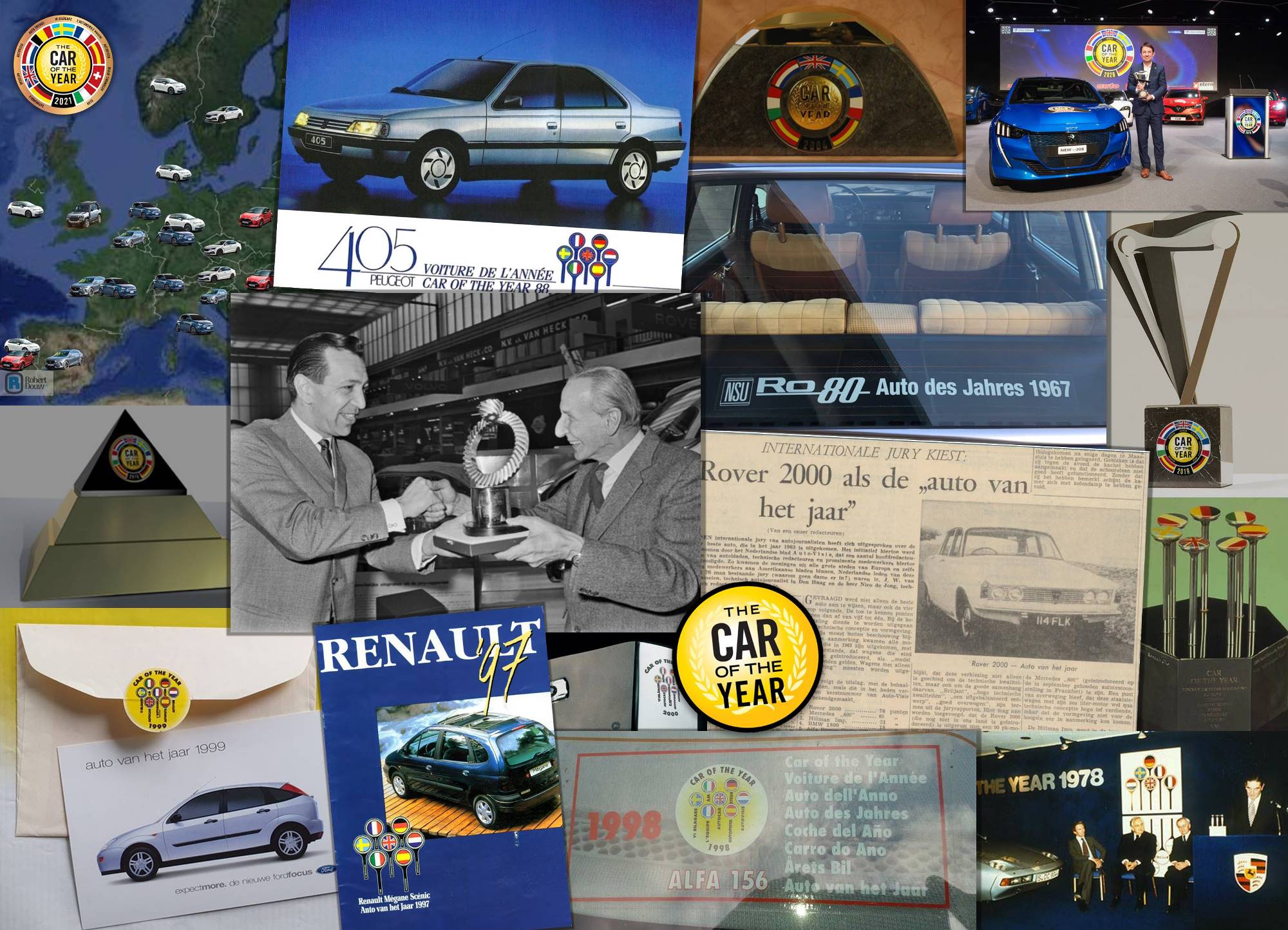
CAR OF THE YEAR TOP 50
View the entire Top 50
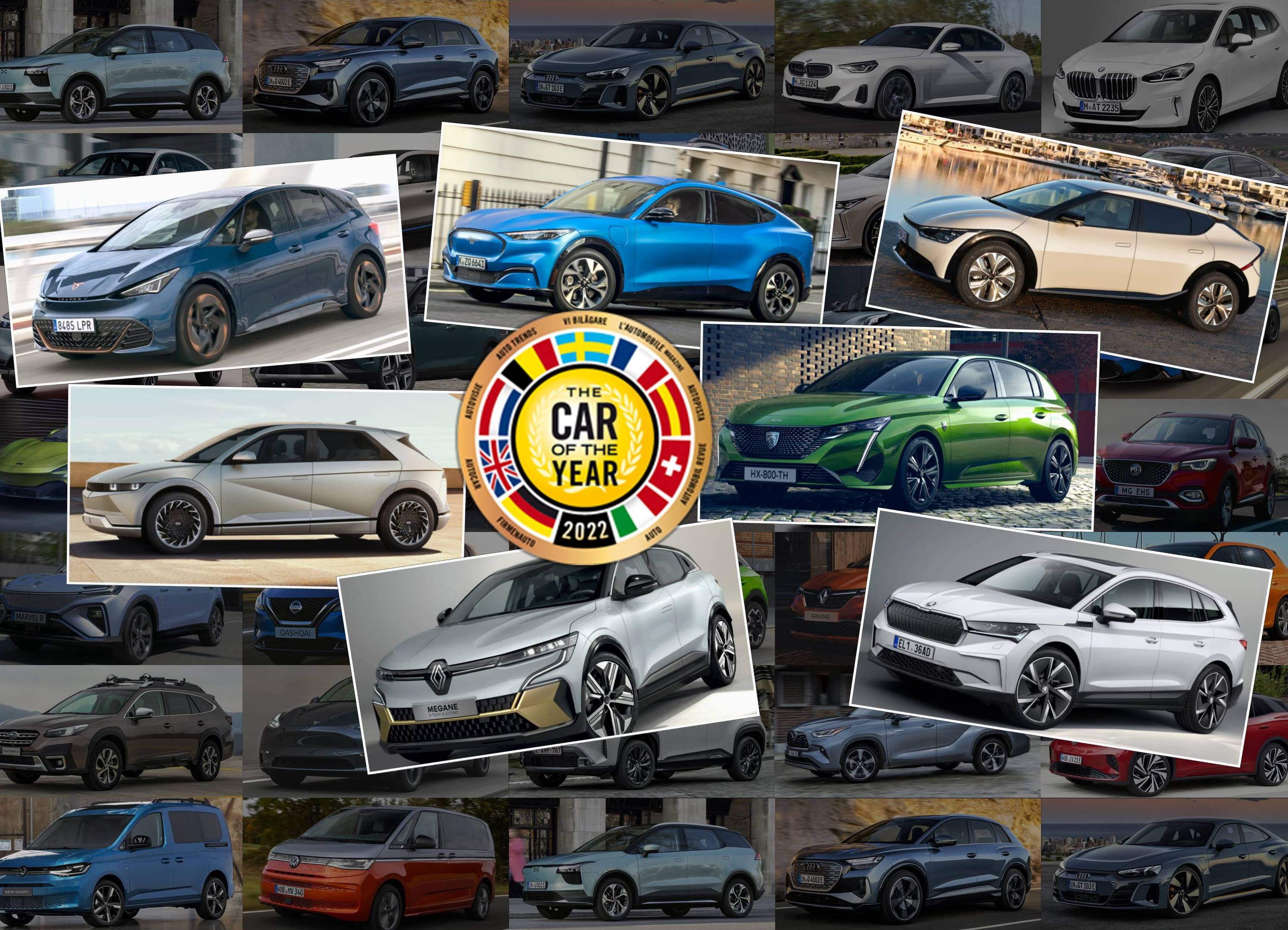
CAR OF THE YEAR 2022
Car of the Year 2022
